Population-stabilizing portfolio effects of fine-scale environmental variations in natural resource availability to malaria vector mosquitoes; Characterization and implications for malaria vector control strategies

Deo Kavishe, Research Scientist at the Ifakara Health Institute in Tanzania and PhD candidate at the UCC School of Biological, Earth & Environmental Sciences marching off along a typical miombo woodland glade, led by Mr Octavian Mrope, head of the Village Game Scouts for the ILUMA Wildlife Management Area near Ifakara in southern Tanzania.
Despite considerable progress since the turn of the century, the fight against malaria has stalled in the last few years. There are two main obstacles to the disappearance of the disease: resistance of mosquitoes to insecticides and their ability to avoid core vector control measures by feeding upon animals, feeding outdoors or resting outdoors. Recognizing that both these phenomena are heavily influenced by environmental variations in the abundance of natural resources that mosquitoes need to survive, notably mammalian blood sources and surface water, this project aims to characterize the malaria control opportunities and obstacles that arise from biodiversity conservation efforts across Africa. Our overall goal is to bring the fight against malaria one step closer to elimination while also fostering improved management of wildlife conservation areas.
Population-stabilizing portfolio effects of fine-scale environmental variations in natural resource availability to malaria vector mosquitoes; Characterization and implications for malaria vector control strategies
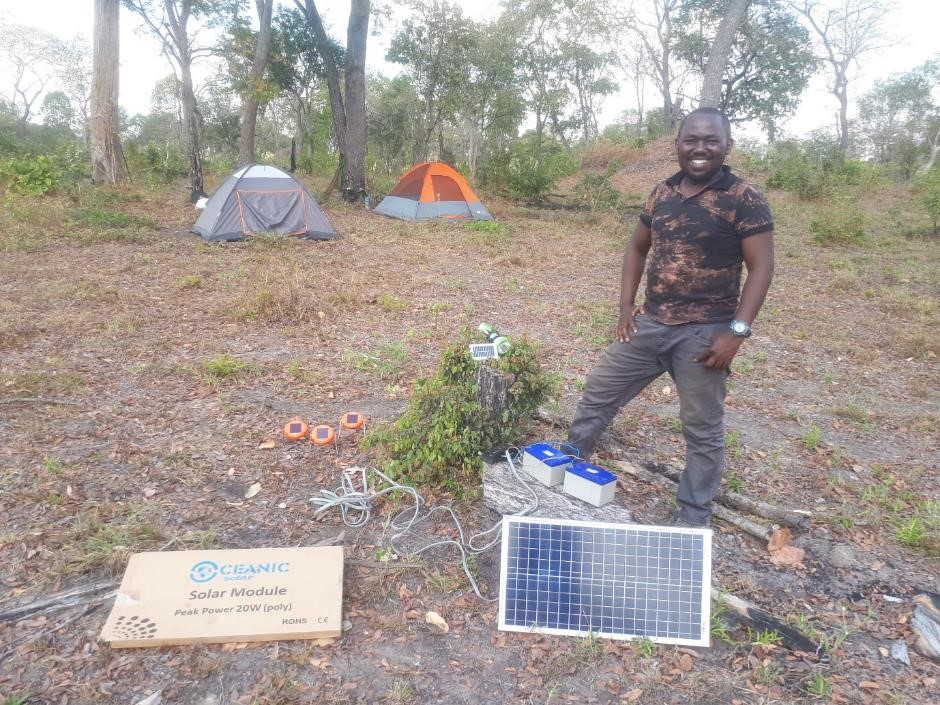 Deo Kavishe, Research Scientist at the Ifakara Health Institute in Tanzania and PhD candidate at the UCC School of Biological, Earth & Environmental Sciences charging his light traps to see if he can find fully-susceptible wild type variants of malaria vector mosquitoes surviving far away from people and our insecticides in the ILUMA Wildlife Management Area in southern Tanzania
Deo Kavishe, Research Scientist at the Ifakara Health Institute in Tanzania and PhD candidate at the UCC School of Biological, Earth & Environmental Sciences charging his light traps to see if he can find fully-susceptible wild type variants of malaria vector mosquitoes surviving far away from people and our insecticides in the ILUMA Wildlife Management Area in southern Tanzania
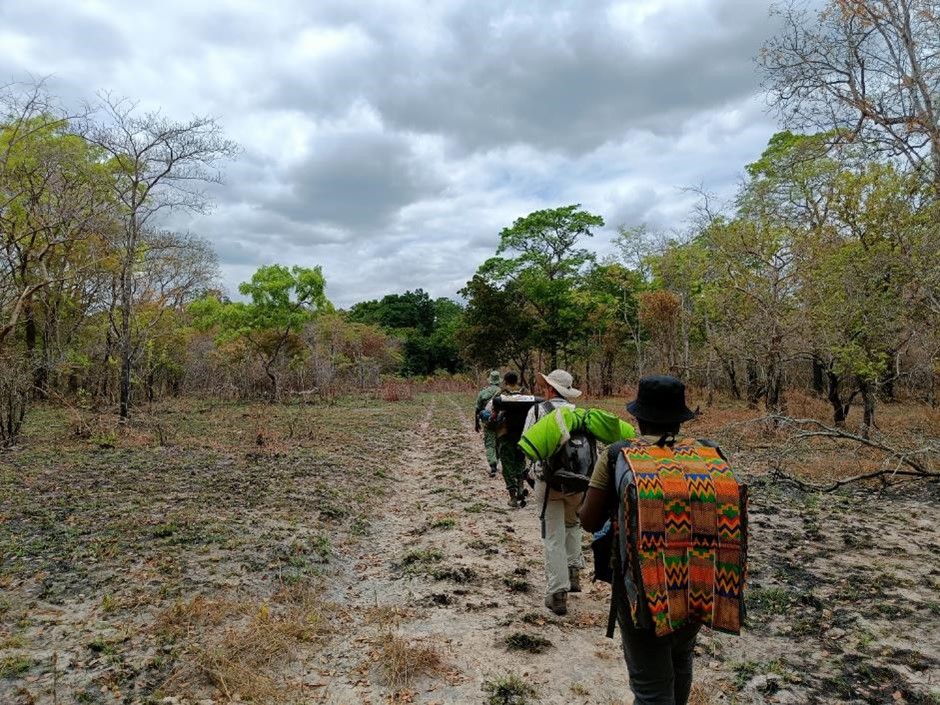 Deo Kavishe, Research Scientist at the Ifakara Health Institute in Tanzania and PhD candidate at the UCC School of Biological, Earth & Environmental Sciences, successfully field tests his new invention: A ventilated backpack with passive evaporative cooling, for long distance transportation of live mosquitoes across large tracts of wilderness that will only be accessible on foot when the rains come. His mosquitoes all survived a 4-day, 60km hike across the ILUMA Wildlife Management Area, including this typical pristine piece of Miombo woodland along the road marking its eastern boundary with Nyerere National Park. He has since published a pre-print demonstrating that mosquito survival rates inside his backpack design are indistinguishable from our field insectary at Msakamba, and temperature and humidity conditions are actually superior.
Deo Kavishe, Research Scientist at the Ifakara Health Institute in Tanzania and PhD candidate at the UCC School of Biological, Earth & Environmental Sciences, successfully field tests his new invention: A ventilated backpack with passive evaporative cooling, for long distance transportation of live mosquitoes across large tracts of wilderness that will only be accessible on foot when the rains come. His mosquitoes all survived a 4-day, 60km hike across the ILUMA Wildlife Management Area, including this typical pristine piece of Miombo woodland along the road marking its eastern boundary with Nyerere National Park. He has since published a pre-print demonstrating that mosquito survival rates inside his backpack design are indistinguishable from our field insectary at Msakamba, and temperature and humidity conditions are actually superior.
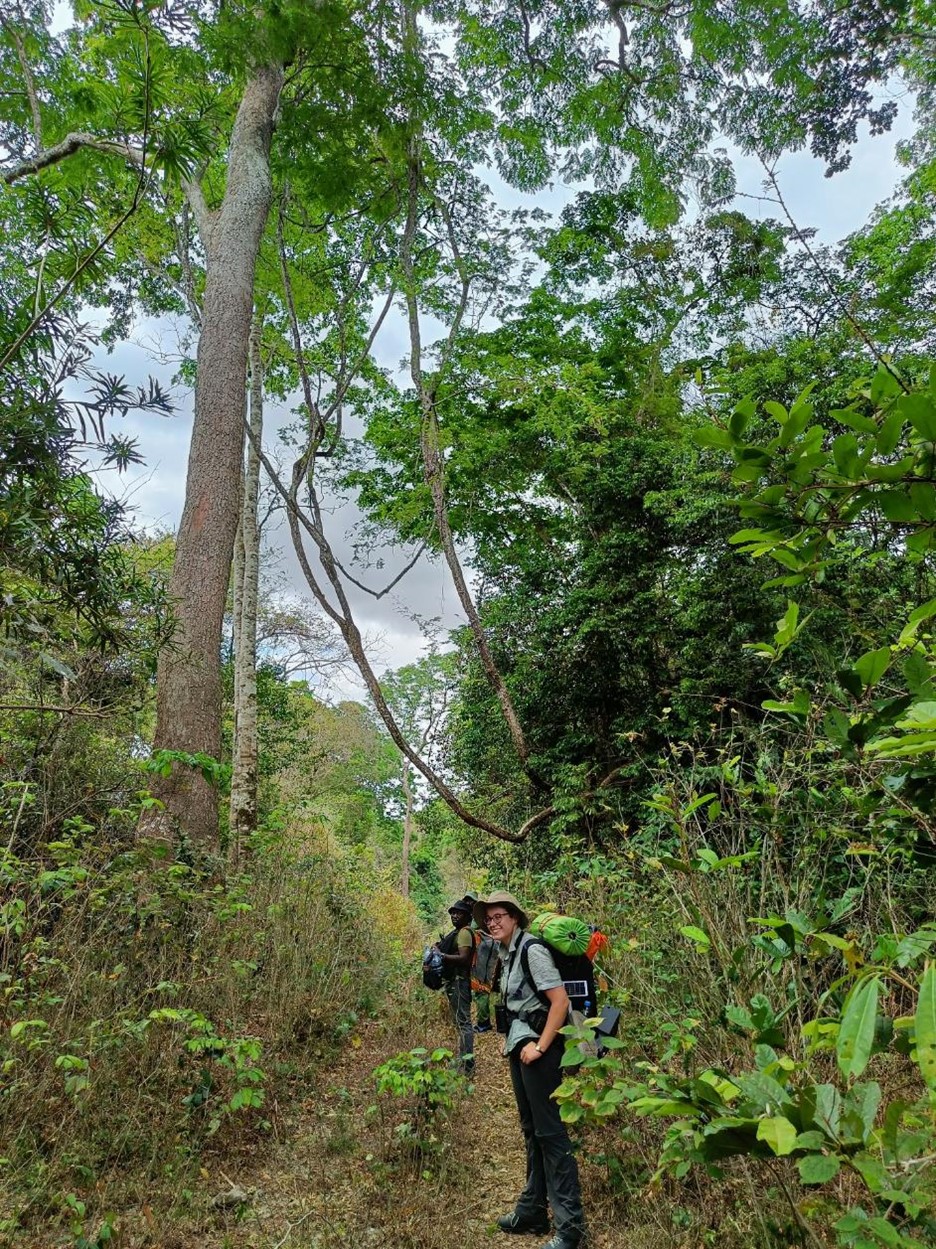 Lily Duggan, now a Masters’ Degree graduate at the School of Biological, Earth & Environmental Sciences at UCC takes the wildlife surveys she is piloting across the ILUMA Wildlife Management Area in collaboration with the Ifakara Health Institute and Sokoine University of Agriculture into the dense groundwater forest along the south bank of the Kilombero Valley.
Lily Duggan, now a Masters’ Degree graduate at the School of Biological, Earth & Environmental Sciences at UCC takes the wildlife surveys she is piloting across the ILUMA Wildlife Management Area in collaboration with the Ifakara Health Institute and Sokoine University of Agriculture into the dense groundwater forest along the south bank of the Kilombero Valley.
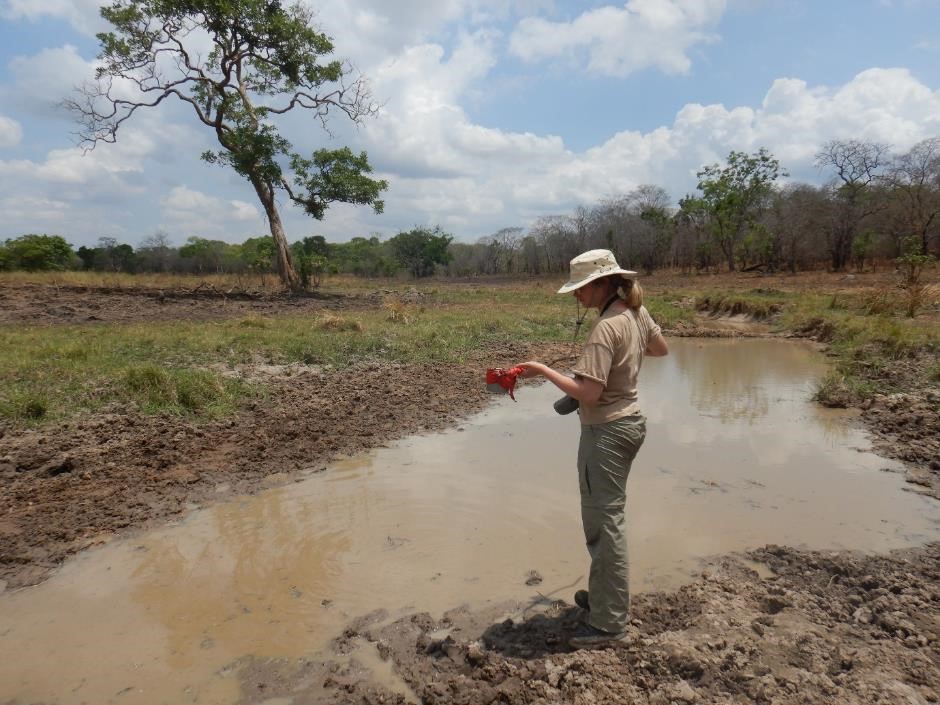 Katrina Walsh, now a Masters’ Degree graduate at the School of Biological, Earth & Environmental Sciences at UCC collaborating with the Ifakara Health Institute and Sokoine University of Agriculture, finds abundant malaria vector mosquito larvae in dry season water hole frequented by African Buffalo, which we suspect they rely on as a source of blood deep in the ILUMA Wildlife Management Area, where humans and livestock are essentially absent.
Katrina Walsh, now a Masters’ Degree graduate at the School of Biological, Earth & Environmental Sciences at UCC collaborating with the Ifakara Health Institute and Sokoine University of Agriculture, finds abundant malaria vector mosquito larvae in dry season water hole frequented by African Buffalo, which we suspect they rely on as a source of blood deep in the ILUMA Wildlife Management Area, where humans and livestock are essentially absent.
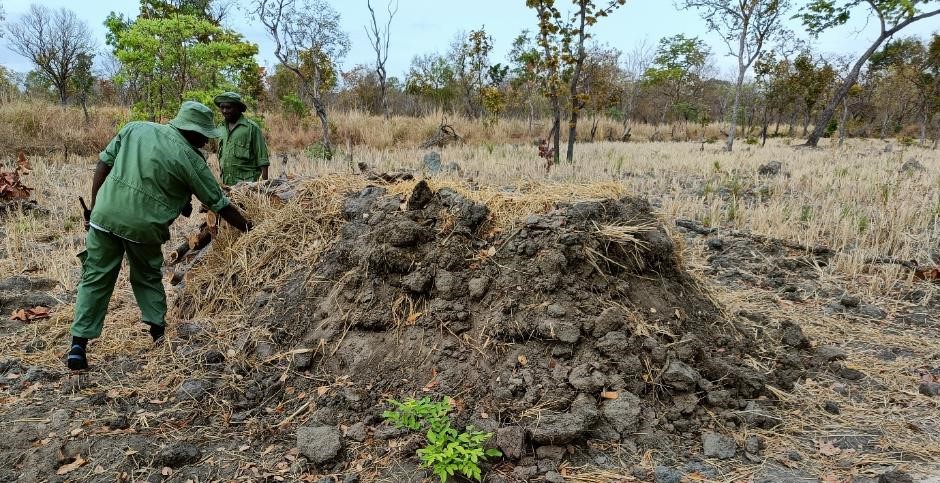 Climate action at grass roots level: Village Game Scouts from the ILUMA Wildlife Management Area, a community-based conservation and rural development organization, deliver on the environmental protection objectives of our study by destroying a charcoal burning mound encountered during our collaborative pilot surveys of mosquitoes, wildlife and vegetation cover with the Ifakara Health Institute and Sokoine University of Agriculture.
Climate action at grass roots level: Village Game Scouts from the ILUMA Wildlife Management Area, a community-based conservation and rural development organization, deliver on the environmental protection objectives of our study by destroying a charcoal burning mound encountered during our collaborative pilot surveys of mosquitoes, wildlife and vegetation cover with the Ifakara Health Institute and Sokoine University of Agriculture.

Several bicycles, a motorbike and large quantities of charcoal and timber confiscated by the Village Game Scouts who escorted us through the ILUMA Wildlife Management Area during one of our pilot surveys of mosquitoes and wildlife.
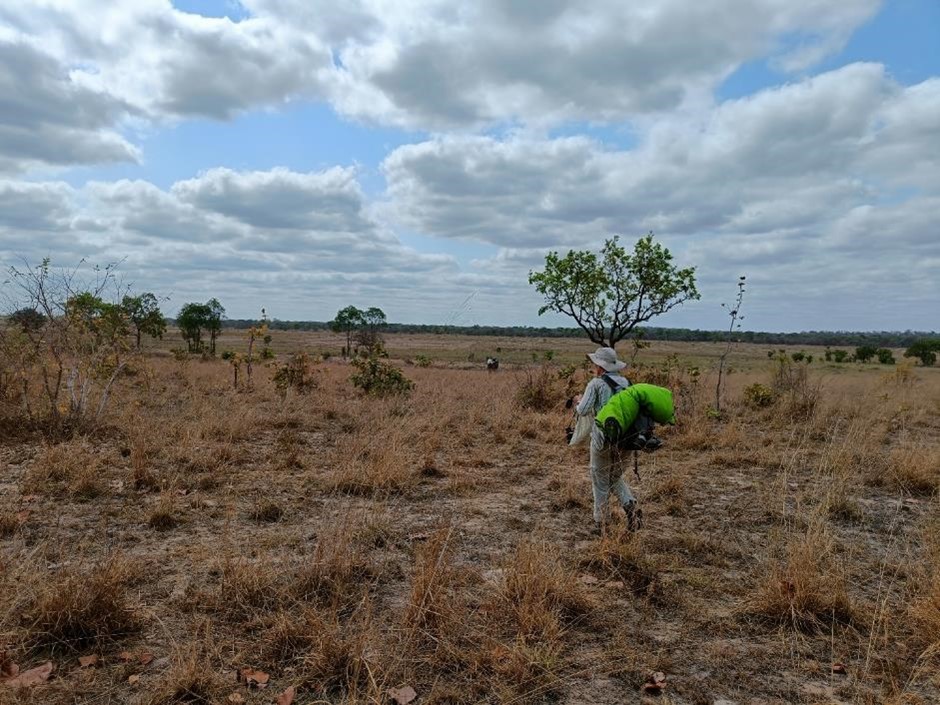 Dr Fidelma Butler from the UCC School of Biological Earth and Environmental Sciences sets off across the extensive Bonde la Mdaba floodplain in the ILUMA Wildlife Management Area while piloting and fine-tuning wildlife surveys in collaboration with the Ifakara Health Institute and Sokoine University of Agriculture.
Dr Fidelma Butler from the UCC School of Biological Earth and Environmental Sciences sets off across the extensive Bonde la Mdaba floodplain in the ILUMA Wildlife Management Area while piloting and fine-tuning wildlife surveys in collaboration with the Ifakara Health Institute and Sokoine University of Agriculture.
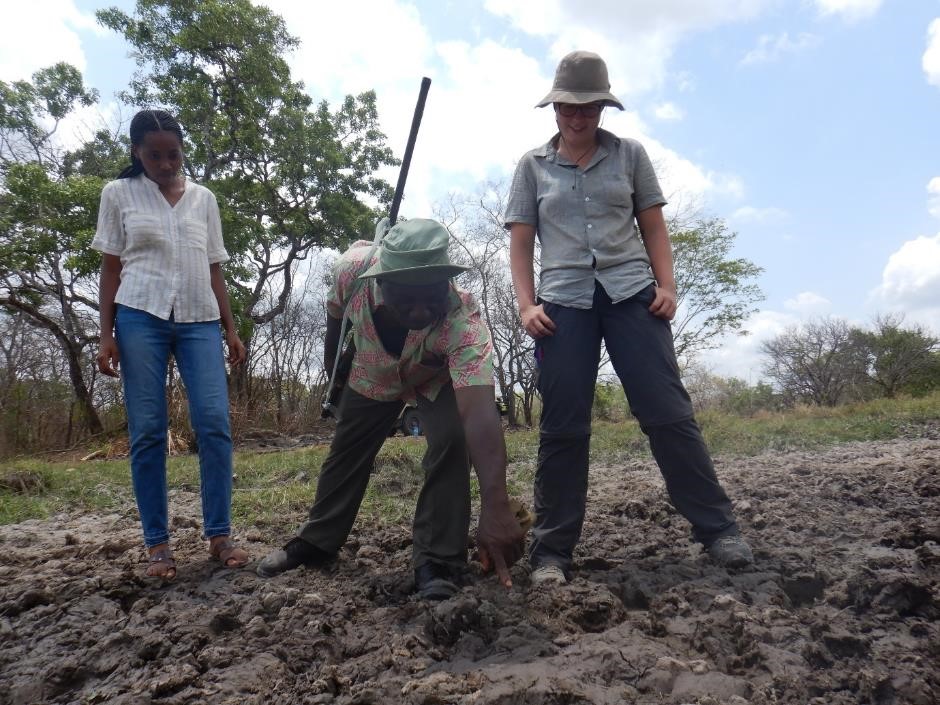 ILUMA Village Game Scout Mzee Kimboga points out a Warthog footprint at a dry season water hole, in amongst many others left by African Buffalo, to students Maureen Daffa from the College of Forestry, Wildlife and Tourism at Sokoine University of Agriculture (Left) and Lily Duggan from the UCC School of Biological, Earth and Environmental Sciences (Right).
ILUMA Village Game Scout Mzee Kimboga points out a Warthog footprint at a dry season water hole, in amongst many others left by African Buffalo, to students Maureen Daffa from the College of Forestry, Wildlife and Tourism at Sokoine University of Agriculture (Left) and Lily Duggan from the UCC School of Biological, Earth and Environmental Sciences (Right).
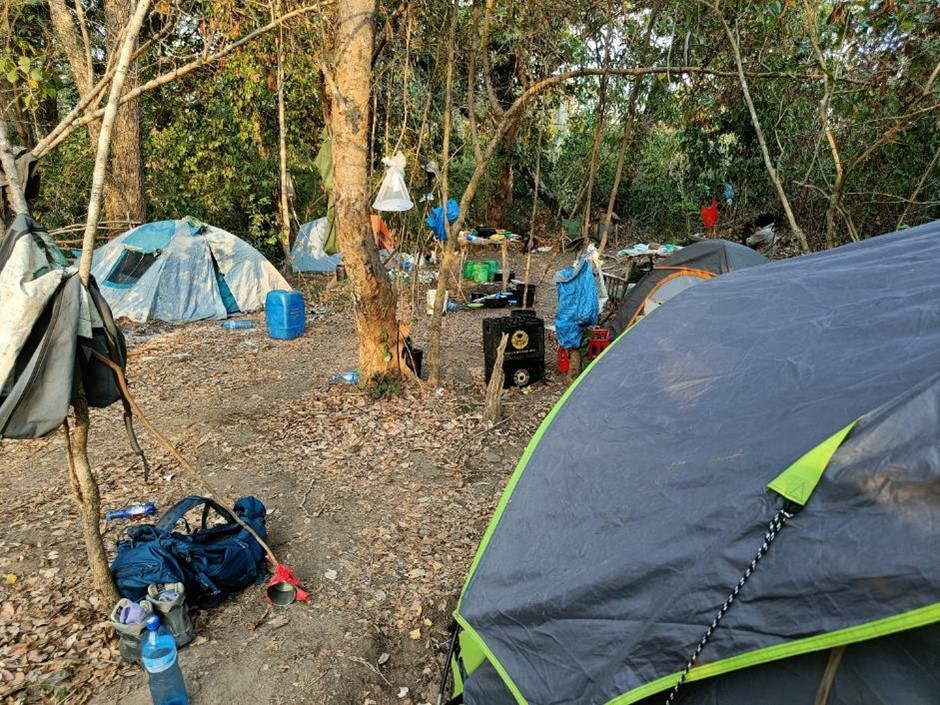 Home sweet home: Our central camp at Msakamba Banda Mbili, where we will establish a field insectary and office for this collaborative project with the Ifakara Health Institute and Sokoine University of Agriculture, and also a new centre of operations for the Village Game Scouts who implement the conservation functions of the ILUMA Wildlife Management Area.
Home sweet home: Our central camp at Msakamba Banda Mbili, where we will establish a field insectary and office for this collaborative project with the Ifakara Health Institute and Sokoine University of Agriculture, and also a new centre of operations for the Village Game Scouts who implement the conservation functions of the ILUMA Wildlife Management Area.
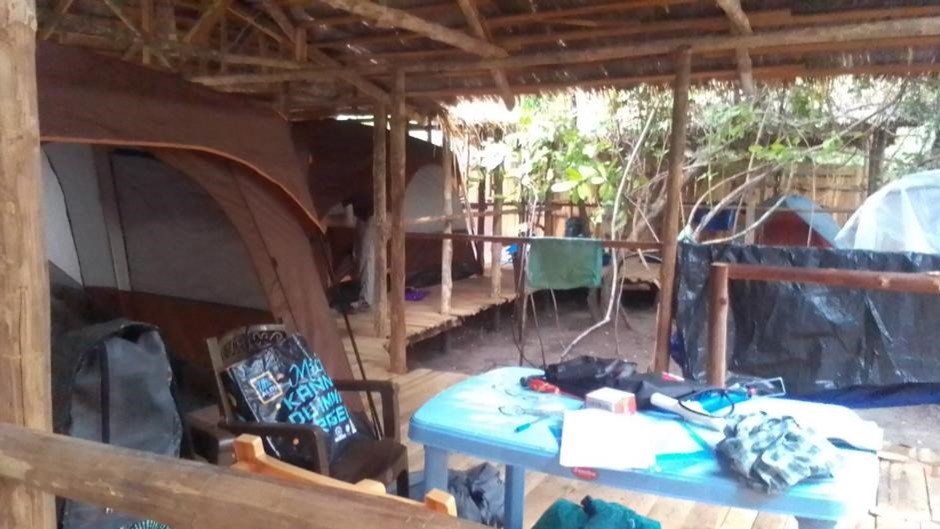 A few months later, our camp at Msakamba Banda Mbili transformed into a field insectary for rearing and experimenting on wild-caught malaria vector mosquitoes, as well as a fully developed centre of operations for the ILUMA Wildlife Management Area Village Game Scouts.
A few months later, our camp at Msakamba Banda Mbili transformed into a field insectary for rearing and experimenting on wild-caught malaria vector mosquitoes, as well as a fully developed centre of operations for the ILUMA Wildlife Management Area Village Game Scouts.
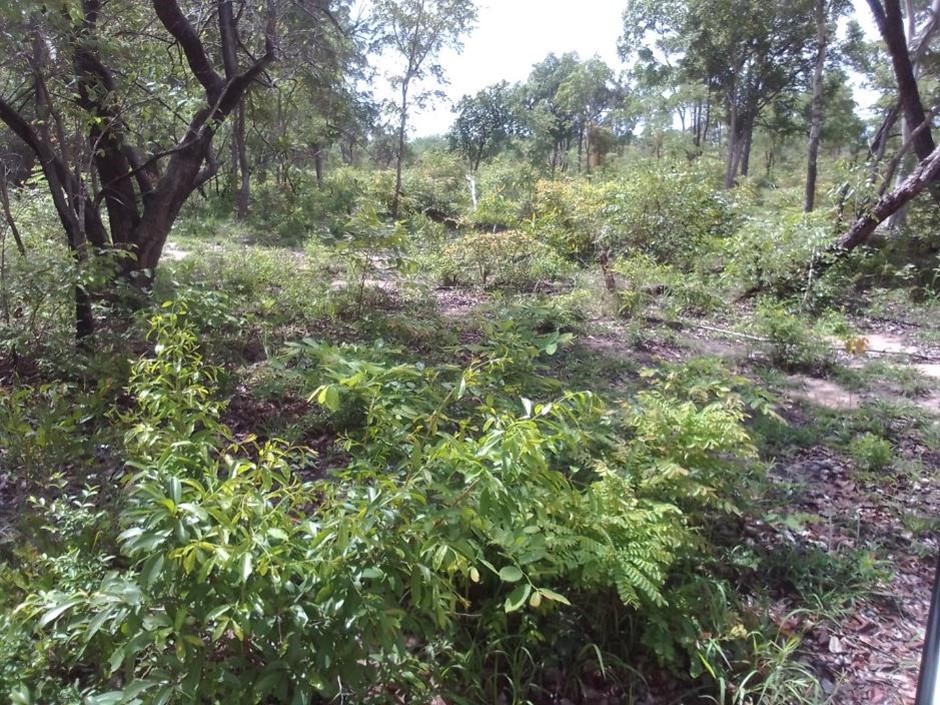 Rapid regrowth of the miombo woodland that had been illegally cleared for rice farming occuring around Msakamba Mbili as encroachment pressure eases, turning the recovering hardwood forest back into a natural high capacity carbon sink. In only a year since the new camp was established, these saplings have grown over our heads and the wildlife has returned. Elephants are daily visitors from June to August, while Zebra, hartebeest, sable and duiker are now commonly seen in this recovering habitat, and resident leopard are often heard on patrol.
Rapid regrowth of the miombo woodland that had been illegally cleared for rice farming occuring around Msakamba Mbili as encroachment pressure eases, turning the recovering hardwood forest back into a natural high capacity carbon sink. In only a year since the new camp was established, these saplings have grown over our heads and the wildlife has returned. Elephants are daily visitors from June to August, while Zebra, hartebeest, sable and duiker are now commonly seen in this recovering habitat, and resident leopard are often heard on patrol.
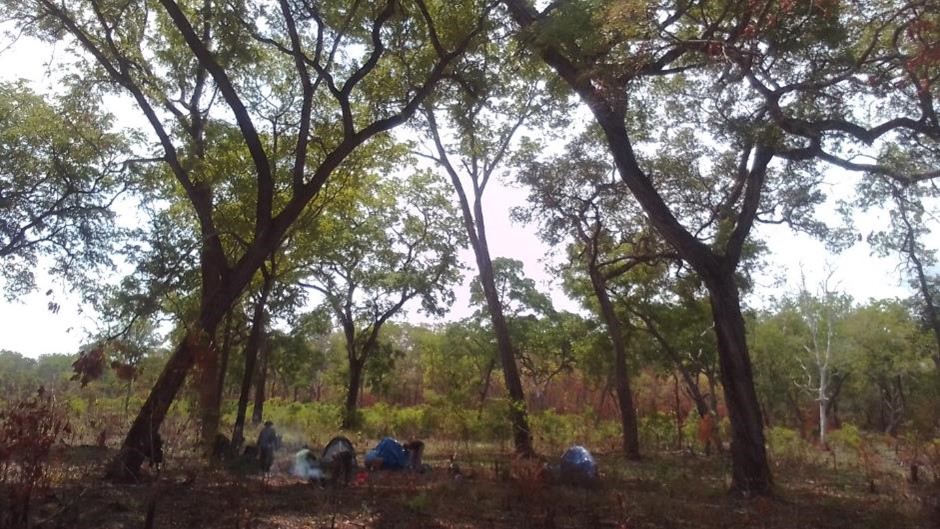 Fly camping along a seasonal stream bed in the pleasant shade of mature miombo woodland, to collect wild malaria vector mosquitoes from a pristine natural habitat with minimal insecticide pressure. Every two days this mobile mosquito collection team moves on foot to a new survey location in the ILUMA Wildlife Management Area, carrying everything they need with them because there is no vehicle access during much of the rainy season.
Fly camping along a seasonal stream bed in the pleasant shade of mature miombo woodland, to collect wild malaria vector mosquitoes from a pristine natural habitat with minimal insecticide pressure. Every two days this mobile mosquito collection team moves on foot to a new survey location in the ILUMA Wildlife Management Area, carrying everything they need with them because there is no vehicle access during much of the rainy season.
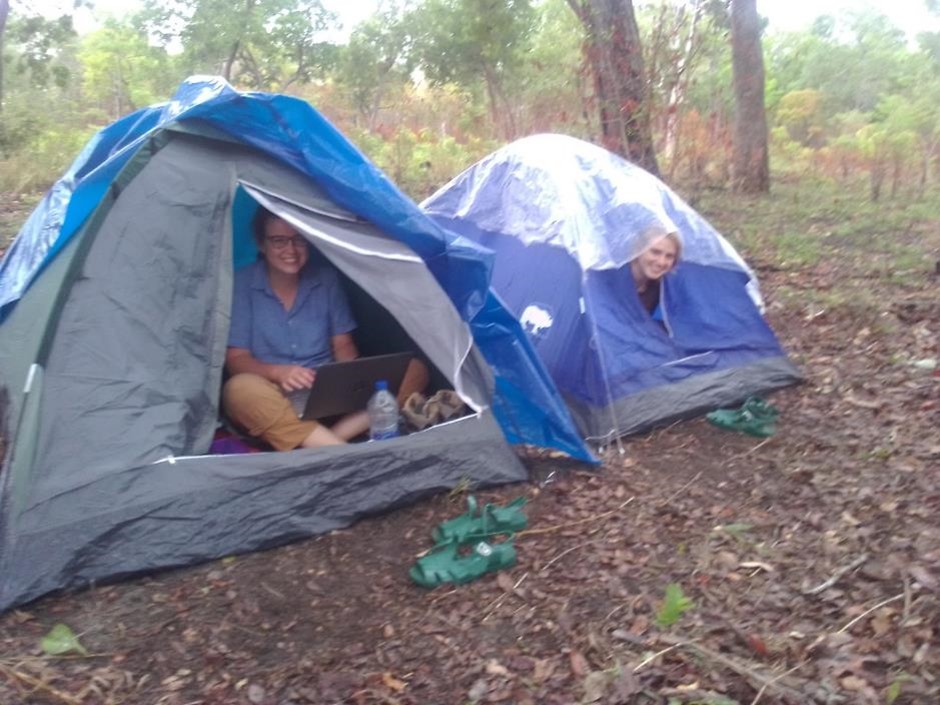 Science on the fly: Lily Duggan enters the latest data while she and Katrina Walsh, both MSc candidates at the UCC School of Biological, Earth & Environmental Sciences, shelter from a rain shower.
Science on the fly: Lily Duggan enters the latest data while she and Katrina Walsh, both MSc candidates at the UCC School of Biological, Earth & Environmental Sciences, shelter from a rain shower.
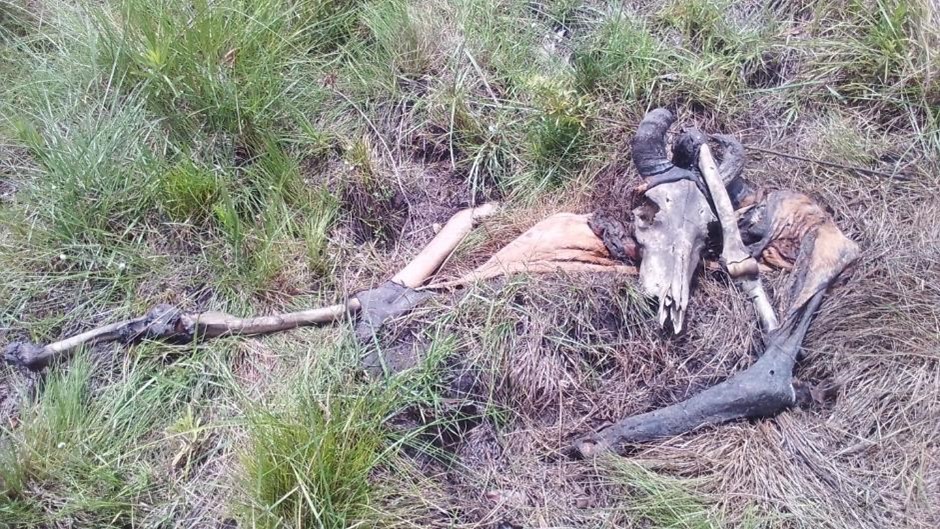 While our main focus is upon mosquitoes that feed on large wild herbivores, they do have some competition in ILUMA Wildlife Management Area: A lioness killed this kongoni (Lichtenstein’s Hartebeest) about 200 meters from our fly camp and hyenas finished off most of the skeleton, leaving only the skull, large leg bones and a little skin.
While our main focus is upon mosquitoes that feed on large wild herbivores, they do have some competition in ILUMA Wildlife Management Area: A lioness killed this kongoni (Lichtenstein’s Hartebeest) about 200 meters from our fly camp and hyenas finished off most of the skeleton, leaving only the skull, large leg bones and a little skin.
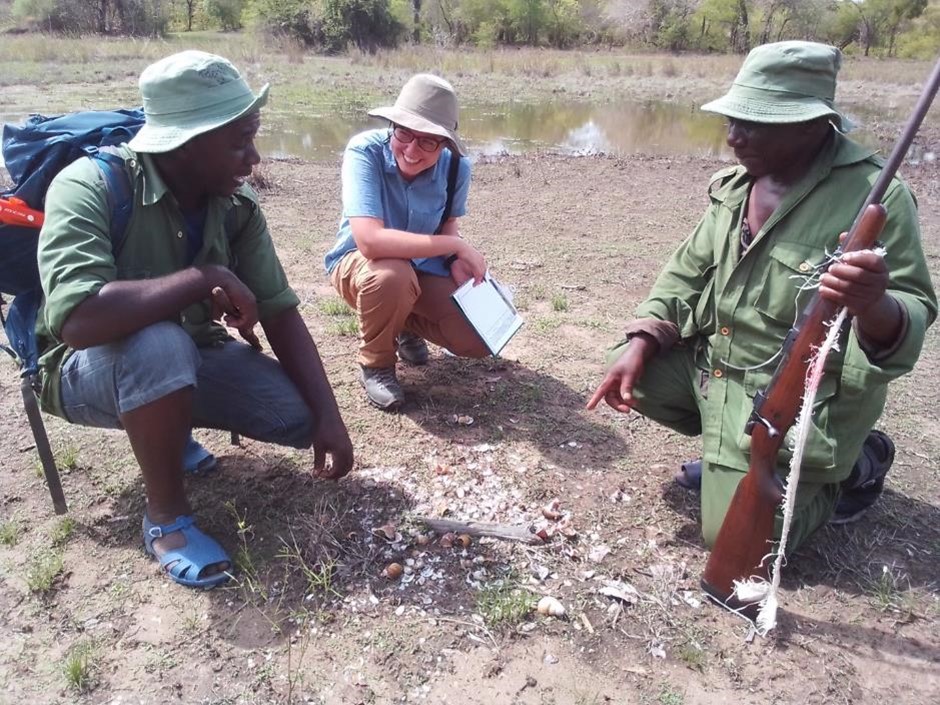 During her surveys of wildlife abundance and illegal human encroachment, Lily Duggan (UCC School of Biological, Earth & Environmental Sciences) enjoys an animated explanation of how the water mongoose carries around the stone it uses to smash open crabs on a wooden anvil like this one, kindly provided by Octavian Mrope and Mzee Kimboga, both of whom are Village Game Scouts at the ILUMA Wildlife Management Area.
During her surveys of wildlife abundance and illegal human encroachment, Lily Duggan (UCC School of Biological, Earth & Environmental Sciences) enjoys an animated explanation of how the water mongoose carries around the stone it uses to smash open crabs on a wooden anvil like this one, kindly provided by Octavian Mrope and Mzee Kimboga, both of whom are Village Game Scouts at the ILUMA Wildlife Management Area.
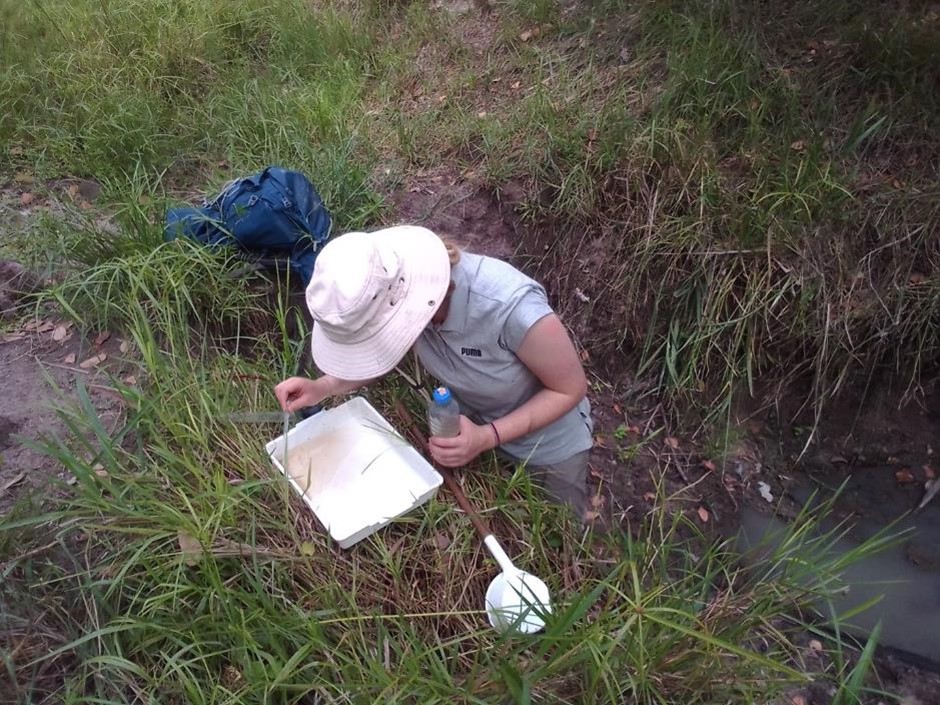 Katrina Walsh, now a MSc graduate of the School of Biological, Earth & Environmental Sciences collects Anopheles malaria vector mosquito larvae from a pool in the bottom of a seasonal stream bed in the ILUMA Wildlife Management Area. Live larvae and adult mosquitoes are then transported on foot back to our central insectary at Msakamba Banda Mbili by a team of Village Game Scouts who complete the round trip of up to 40km every 2 days.
Katrina Walsh, now a MSc graduate of the School of Biological, Earth & Environmental Sciences collects Anopheles malaria vector mosquito larvae from a pool in the bottom of a seasonal stream bed in the ILUMA Wildlife Management Area. Live larvae and adult mosquitoes are then transported on foot back to our central insectary at Msakamba Banda Mbili by a team of Village Game Scouts who complete the round trip of up to 40km every 2 days.
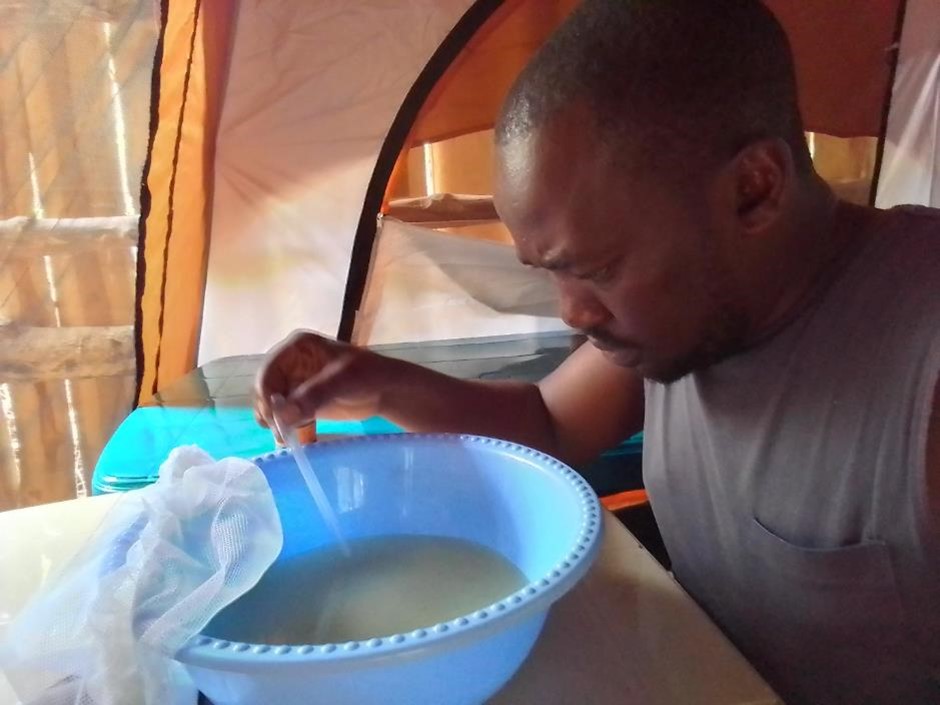 Back at Msakamba Banda Mbili, Deo Kavishe, Research Scientists at IHI and PhD candidate at the UCC School of Biological, Earth & Environmental Sciences collects pupae of the malaria vector mosquito Anopheles arabiensis which were reared from larvae obtained from natural habitats across the ILUMA Wildlife Management Area, so that they can emerge into a cage as adults whose offspring may be tested for susceptibility to pyrethroid insecticides.
Back at Msakamba Banda Mbili, Deo Kavishe, Research Scientists at IHI and PhD candidate at the UCC School of Biological, Earth & Environmental Sciences collects pupae of the malaria vector mosquito Anopheles arabiensis which were reared from larvae obtained from natural habitats across the ILUMA Wildlife Management Area, so that they can emerge into a cage as adults whose offspring may be tested for susceptibility to pyrethroid insecticides.
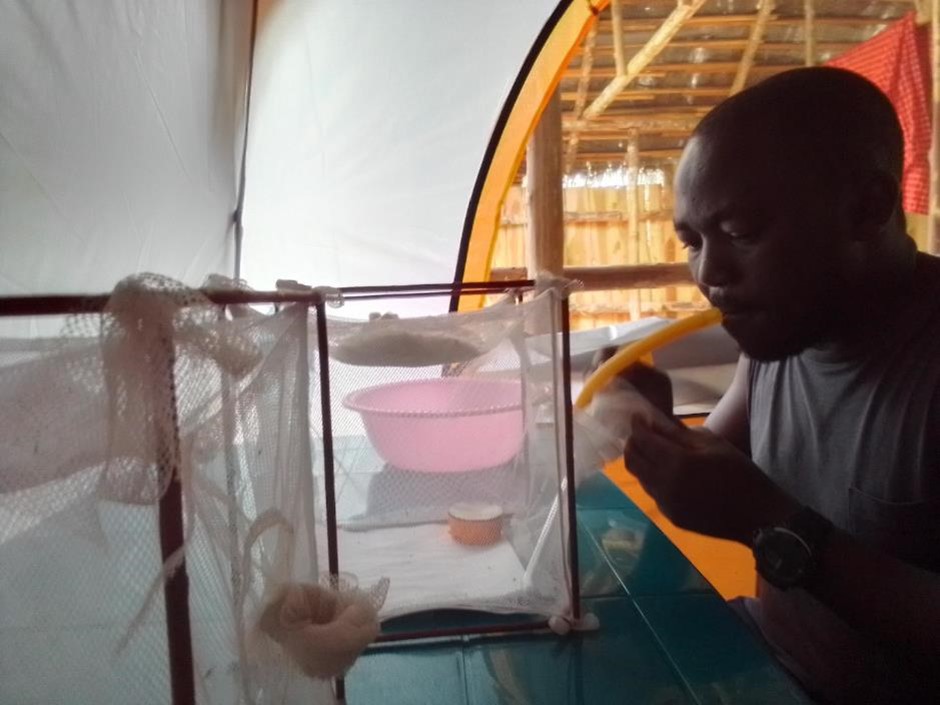 Deo Kavishe, Research Scientists at IHI and PhD candidate at the UCC School of Biological, Earth & Environmental Sciences, transfers fed adult mosquitoes into large cages with oviposition cups containing moist cotton and filter paper, so that their eggs can be collected and then reared to adulthood for insecticide susceptibility testing.
Deo Kavishe, Research Scientists at IHI and PhD candidate at the UCC School of Biological, Earth & Environmental Sciences, transfers fed adult mosquitoes into large cages with oviposition cups containing moist cotton and filter paper, so that their eggs can be collected and then reared to adulthood for insecticide susceptibility testing.
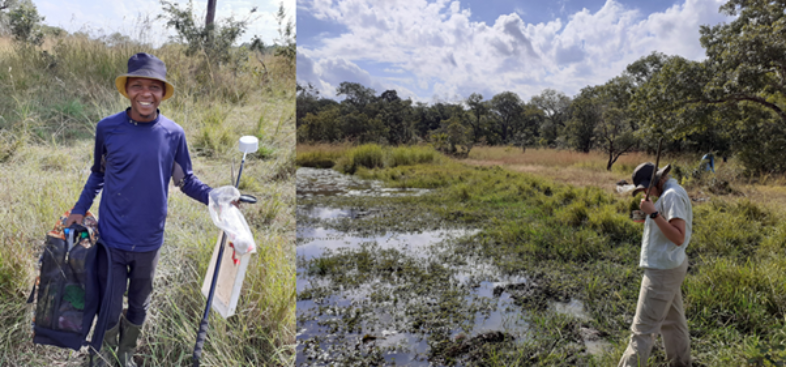
Rogath Msoffe, Research Scientist at the Ifakara Health Institute and Masters’ Degree candidate at the Nelson Mandela African Institute of Science and Technology, and Cassandra Le Bellicard, BSc candidate at l’Institut Agro in Montpellier and visiting Erasmus student at the UCC School of Biological, Earth & Environmental Sciences, surveying the fine scale dynamics of malaria vector larval habitats around a large water hole regularly frequented by elephant and buffalo in the ILUMA Wildlife Management Area.
Lily Duggan and Katrina Walsh, both now Masters' Dregree gratuates of the UCC School of Biological, Earth & Environmental Sciences in Ireland and resident guest scientists at the Ifakara Health Institute in Tanzania literally on the trail of the rather dangerous wild beast that we suspect sustains refugia populations of malaria vectors in conservation areas, where opportunities to feed on blood from humans and cattle are limited.
Of course, working in one of Tanzania’s amazing wild ecosystems requires careful attention to detail and safety protocols, especially when moving around on foot and fly camping for weeks at a time. Here’s a selection of tracks and signs from the wanderings of Lucia Tarimo (Sokoine University of Agriculture), Lily Duggan and Katrina Walsh, all of whom were MSc candidates at the UCC School of Biological, Earth & Environmental Sciences and resident guest scientists at the Ifakara Health Institute at the time.
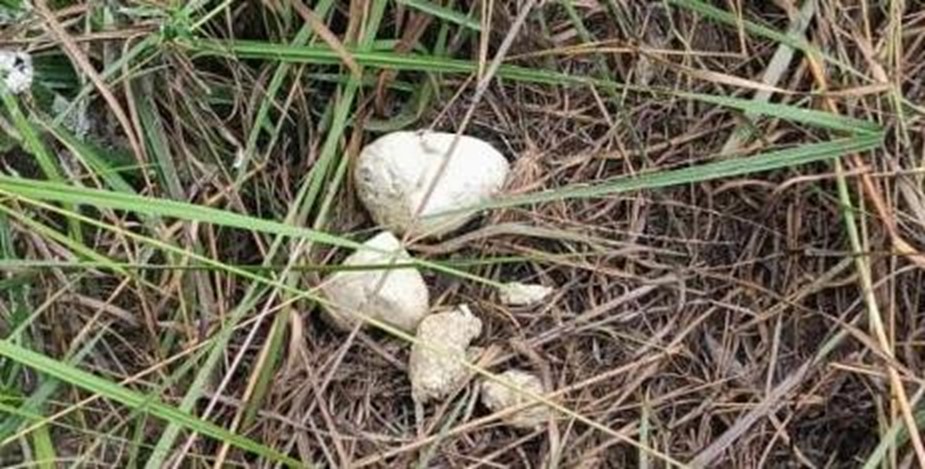 Chalky hyena faeces, composed largely of powdered bone. This is an excellent example of the kinds of tracks, spoor and various other tracks and signs used by Lily Duggan and Lucia Tarimo to map out the activities of 40 different species of wild mammals across the study area, even though most of them (including hyena) were never sighted because of their nocturnal activity patterns and the dense vegetation cover in such forest and flood plain habitats. The new methodology they developed for applying this approach around surveys of water sources, rather than along transects, is now detailed in their published in the African Journal of Ecology.
Chalky hyena faeces, composed largely of powdered bone. This is an excellent example of the kinds of tracks, spoor and various other tracks and signs used by Lily Duggan and Lucia Tarimo to map out the activities of 40 different species of wild mammals across the study area, even though most of them (including hyena) were never sighted because of their nocturnal activity patterns and the dense vegetation cover in such forest and flood plain habitats. The new methodology they developed for applying this approach around surveys of water sources, rather than along transects, is now detailed in their published in the African Journal of Ecology.
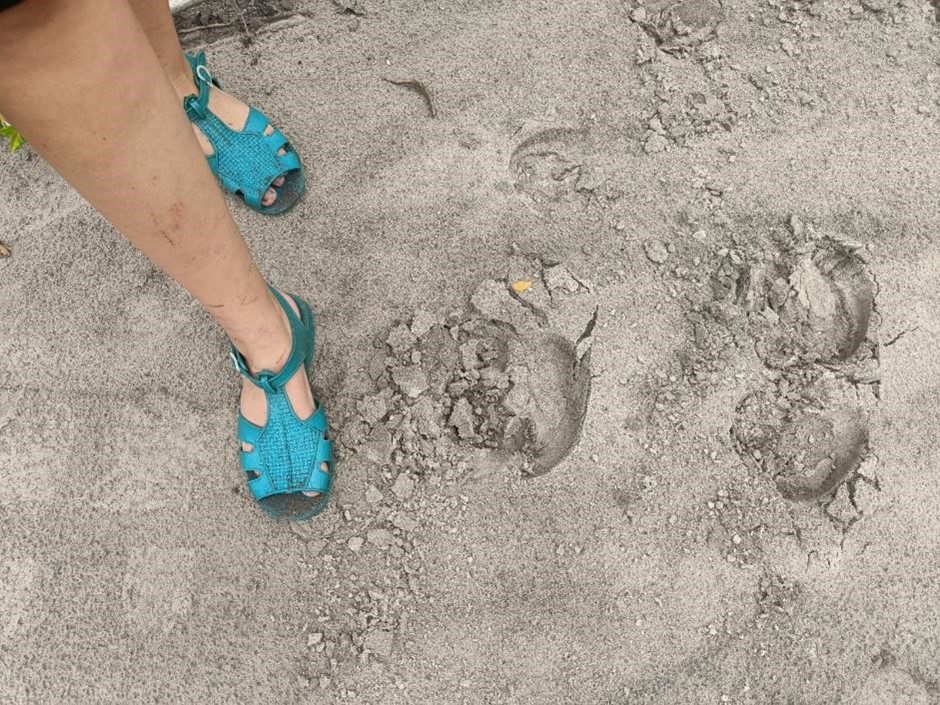 Fresh tracks of a large buffalo. This is an excellent example of what we suspected, at the outset of the study, to be the most likely wild animal to sustain wild populations of Anopheles arabiensis malaria mosquitoes inside conservation areas, where they lack access to their usual preferred blood sources, namely humans and cattle. As explained in her recent publication preprint, Katrina Walsh did indeed clearly document the presence of such self-sustaining refuge vector populations in the ILUMA Wildlife Management Area and deep inside the wildest parts of Nyerere National Park but could not associate its population abundance with the activities of any mammal other than humans and cattle. One surprise, however, was finding it’s close cousin Anopheles quadriannulatus, which is not a vector of malaria, in the wildest areas, where its abundance was clearly associated with impala and, to a lesser extent, bushpig.
Fresh tracks of a large buffalo. This is an excellent example of what we suspected, at the outset of the study, to be the most likely wild animal to sustain wild populations of Anopheles arabiensis malaria mosquitoes inside conservation areas, where they lack access to their usual preferred blood sources, namely humans and cattle. As explained in her recent publication preprint, Katrina Walsh did indeed clearly document the presence of such self-sustaining refuge vector populations in the ILUMA Wildlife Management Area and deep inside the wildest parts of Nyerere National Park but could not associate its population abundance with the activities of any mammal other than humans and cattle. One surprise, however, was finding it’s close cousin Anopheles quadriannulatus, which is not a vector of malaria, in the wildest areas, where its abundance was clearly associated with impala and, to a lesser extent, bushpig.
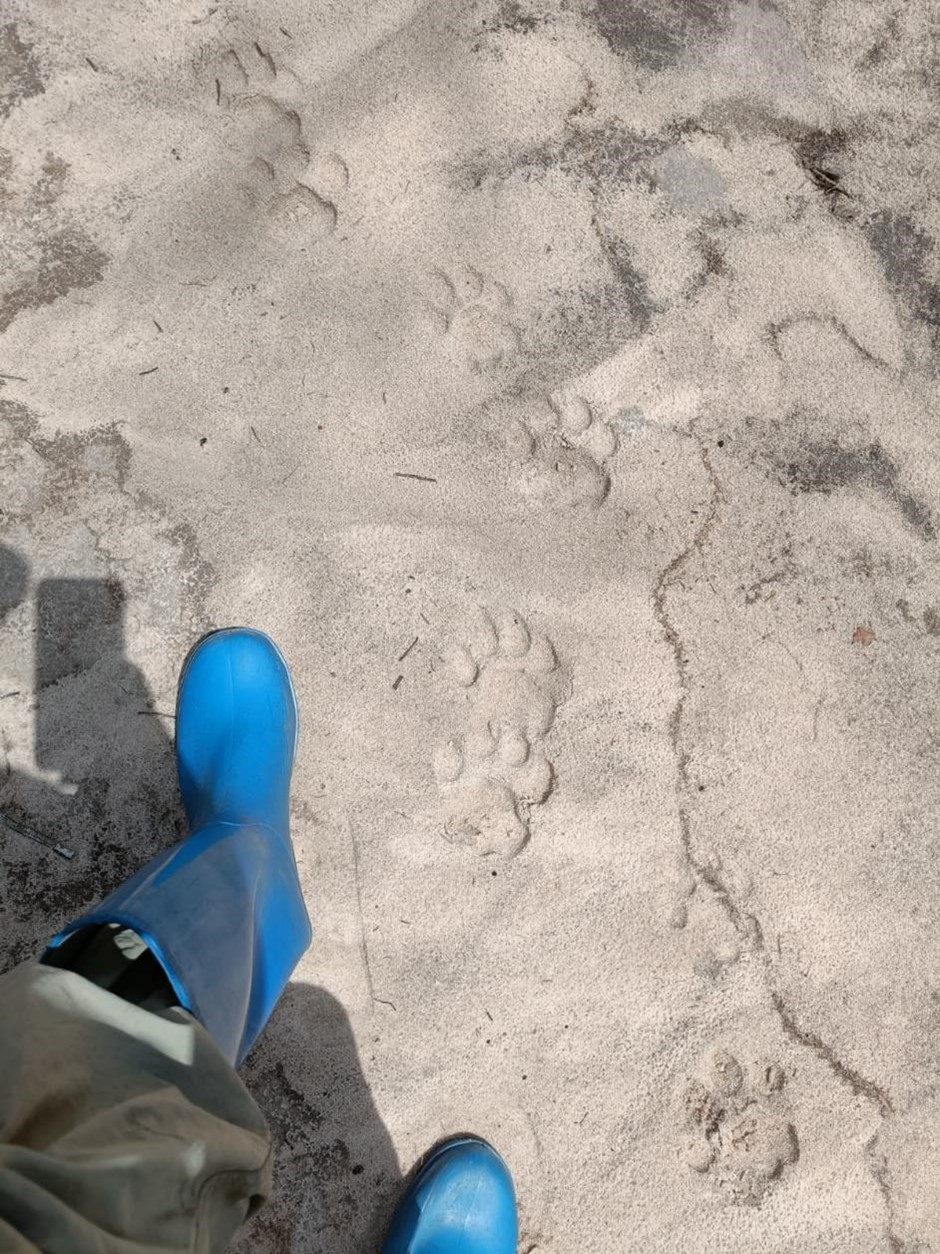 Fresh tracks of a pride of lions somewhere immediately ahead along the road. Sometimes discretion is the better part of valour when surveying large African mammals, especially in vegetation cover as dense as the forests and floodplain grasslands that dominate this ecosystem.
Fresh tracks of a pride of lions somewhere immediately ahead along the road. Sometimes discretion is the better part of valour when surveying large African mammals, especially in vegetation cover as dense as the forests and floodplain grasslands that dominate this ecosystem.
An explanation of our forest surveys by Lucia Tarimo from Sokoine University of Agriculture and MSc candidate at the UCC School of Biological, Earth & Environmental Sciences, together with Alice Twiss, a BSc candidate at the UCC School of Biological, Earth & Environmental Sciences joining the collaborative team in Tanzania as part our summer work-study module and Octavian Mrope, head of the Village Game Scouts at ILUMA Wildlife Management Area at the time.
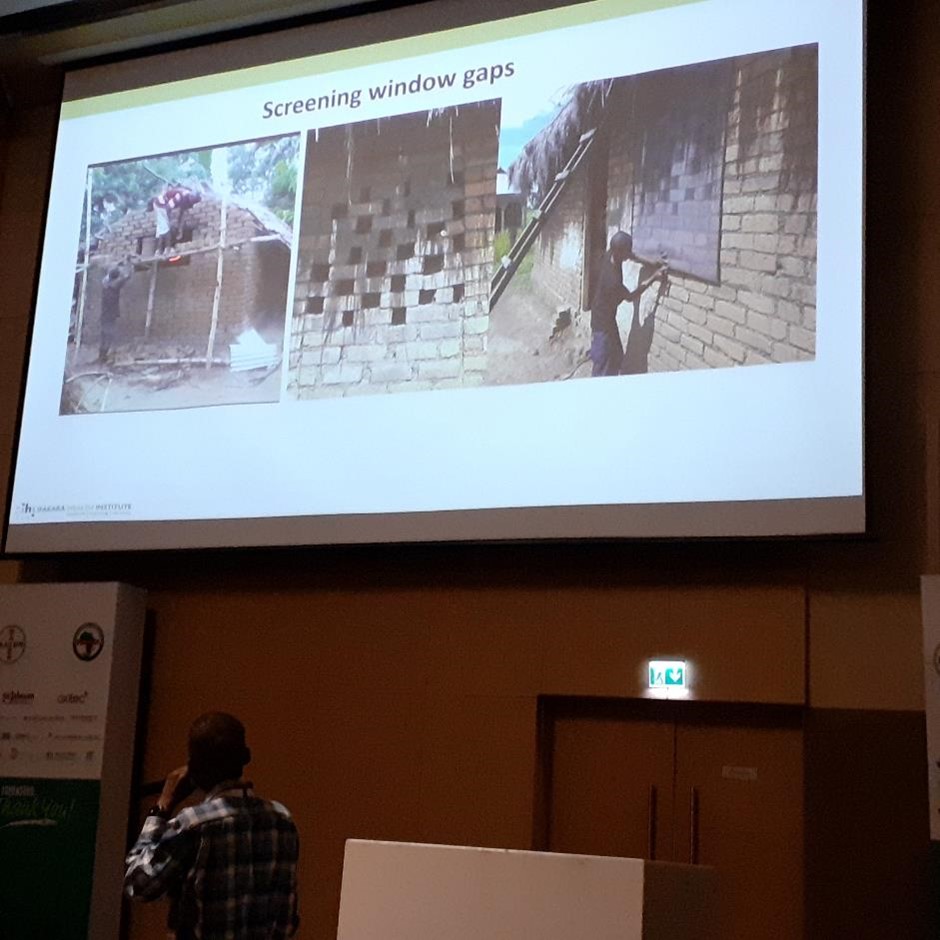
Rogath Msoffe, Research Scientist at Ifakara Health Institute and MSc candidate at Nelson Mandela African Institute of Science and Technology, takes a break from his field work to presenting his recently published study at the 2022 Pan-African Mosquito Control Association annual conference in Kigali, Rwanda. His detailed work in collaboration with local communities demonstrates how participatory approaches to installation of insecticidal mosquito screens in typical rural houses could more effectively tackle malaria transmission, and also allow us to manipulate of mosquito genetics at population level with affordable combinations of complementary insecticides. Specifically, our hope is that we may be able to use such insecticide combinations to back-select for insecticide-susceptibility among malaria mosquito populations, which depends in turn on those ancestral wild-type traits surviving among refuge populations in pristine wilderness areas at the fringes of human settlements, such as the ILUMA Wildlife Management Area.
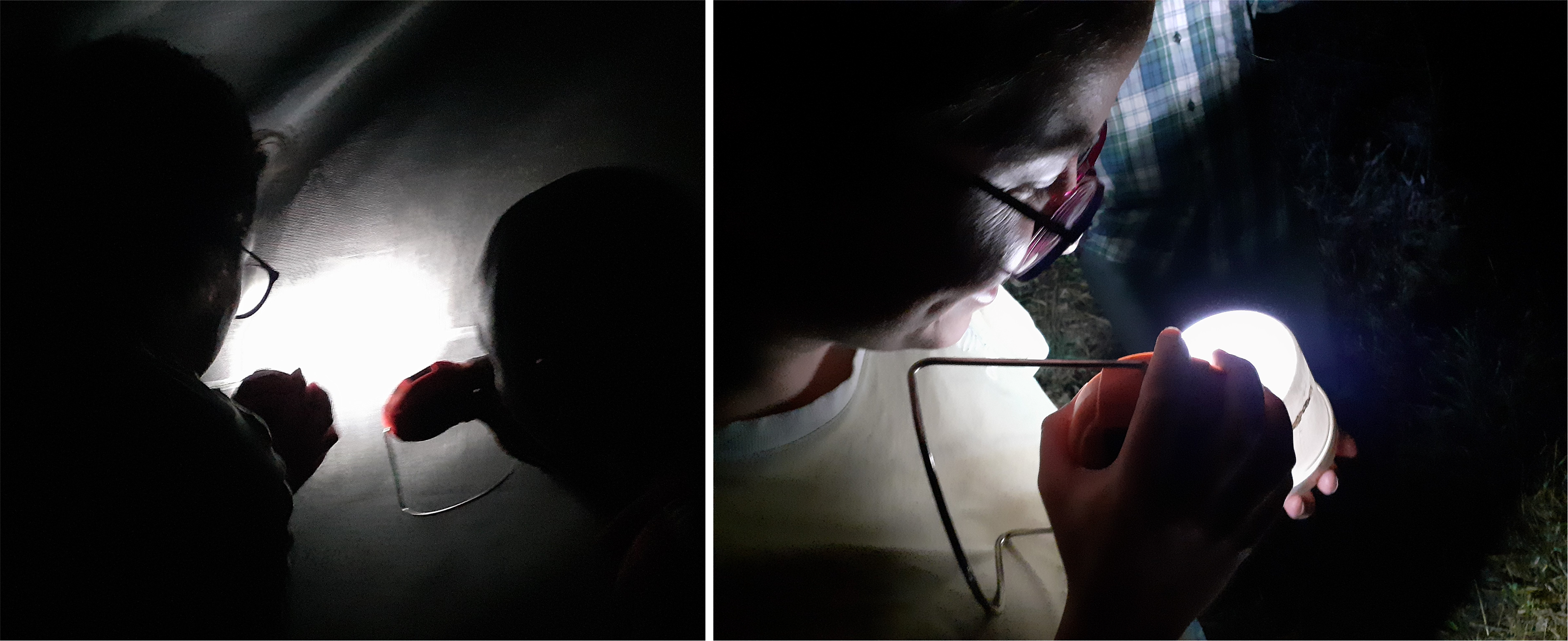
Meanwhile, back in the ILUMA Wildlife Management Area, Lily Duggan (Now an MSc graduate from the UCC School of Biological, Earth & Environmental Sciences) works late into the night collecting wild mosquitoes in pristine wild habitat, where we suspect they find refuge away from anthropogenic insecticide pressure. The resulting data set has been analysed by Deo Kavishe of IFAKARA HEALTH INSTITUTE, as part of his PhD at UCC recently published as a preprint, to demonstrate that while the malaria vector mosquito Anopheles arabiensis responds far more aggressively to traps close to people, it’s non-vector sibling species (a very close cousin) Anopheles quadriannulatus is essentially non-responsive to humans.
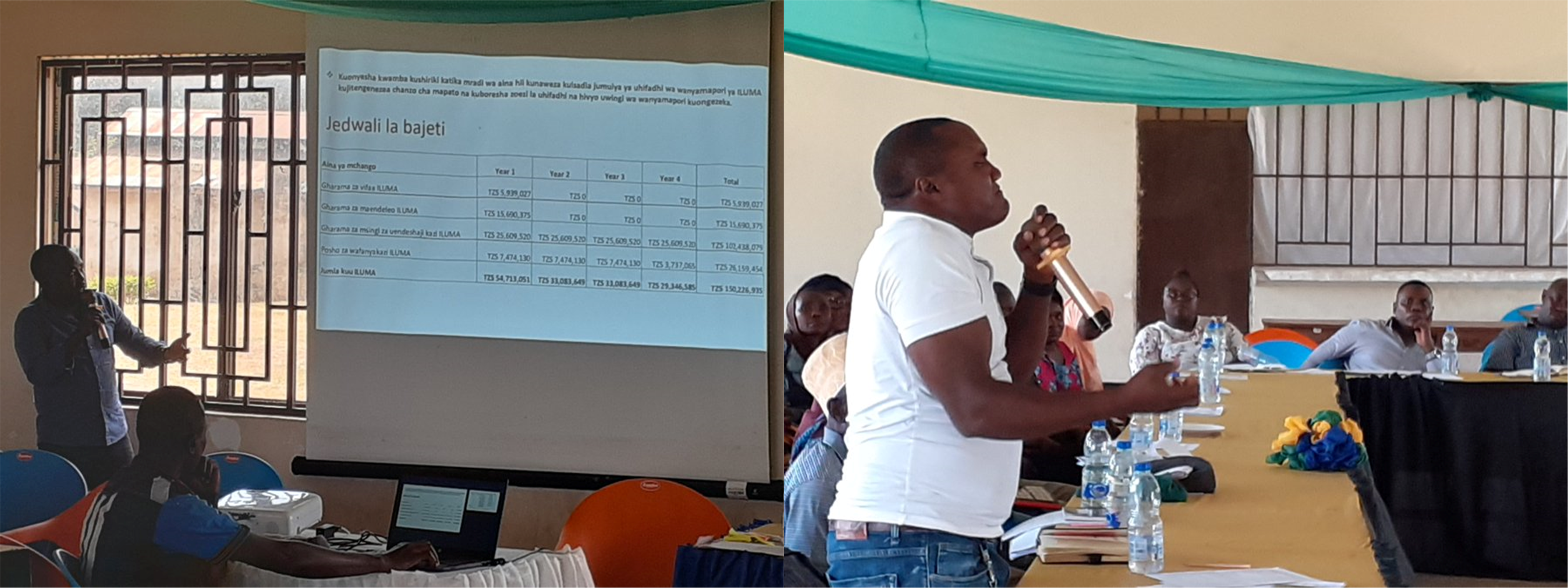
Perhaps the most important things we’ve learned so far through our collaboration with the ILUMA Wildlife Management Area are (1) Just a little bit of collectively managed income from visiting tourists and researchers can go a long way in isolated rural communities, (2) They are broadly supportive of devolved conservation areas and engage in community-based governance when given the opportunity, and (3) Sustainable business models, transparent stewardship and partnership with local government will be vital to their long term success. Here an elected community representative on the governance body of the ILUMA Wildlife Management Area shares wonderfully impassioned views about all this at a recent stakeholder meeting, following a transparent explanation of how our project has shared resources with this community-based conservation body, presented by Mr Deo Kavishe, IHI Research Scientist and UCC PhD Candidate.
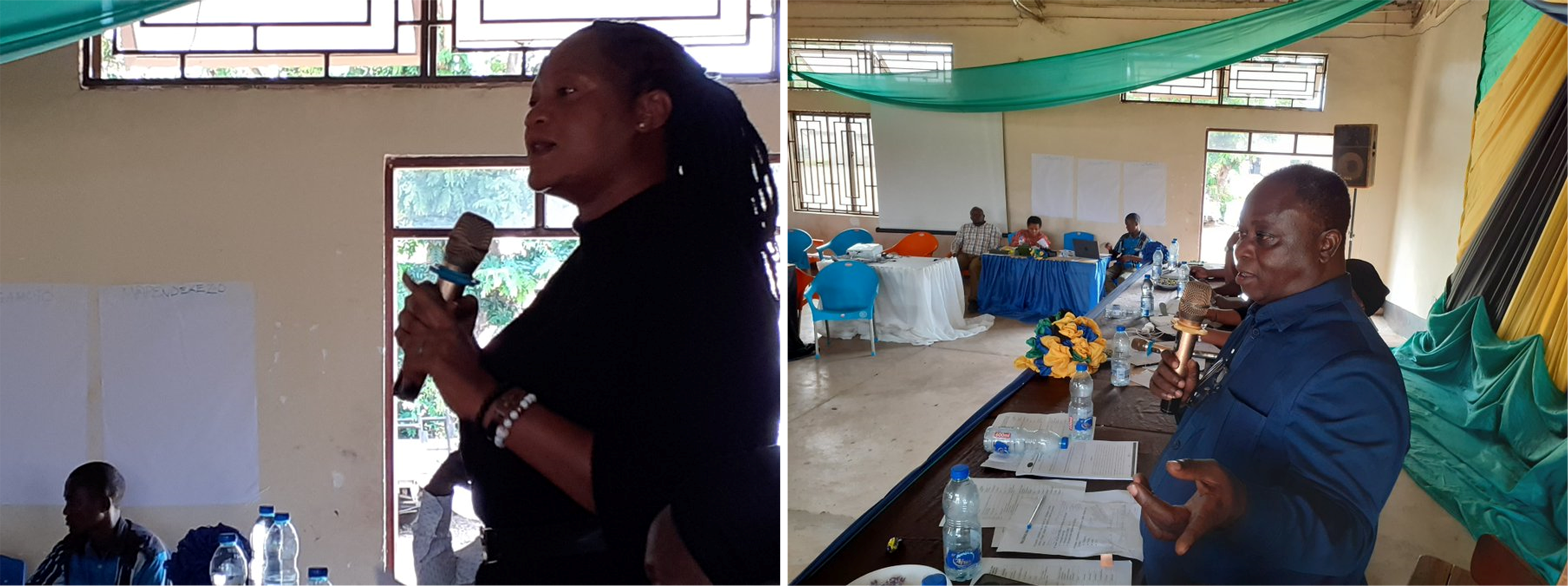
Encouragingly, the views of community representatives were decisively backed up by the District Commissioner for Ulanga, Mh Ngolo Malenya (Left), who explained the role of the ILUMA WMA in the Tanzanian government's overall conservation and development plan for the Kilombero Valley as a whole. Also, the Regional Natural Resources Officer for Morogoro, Mh Joseph Chua (Right), explained the importance of making this devolved model for community-based governance and management work for the villages around the conservation area.
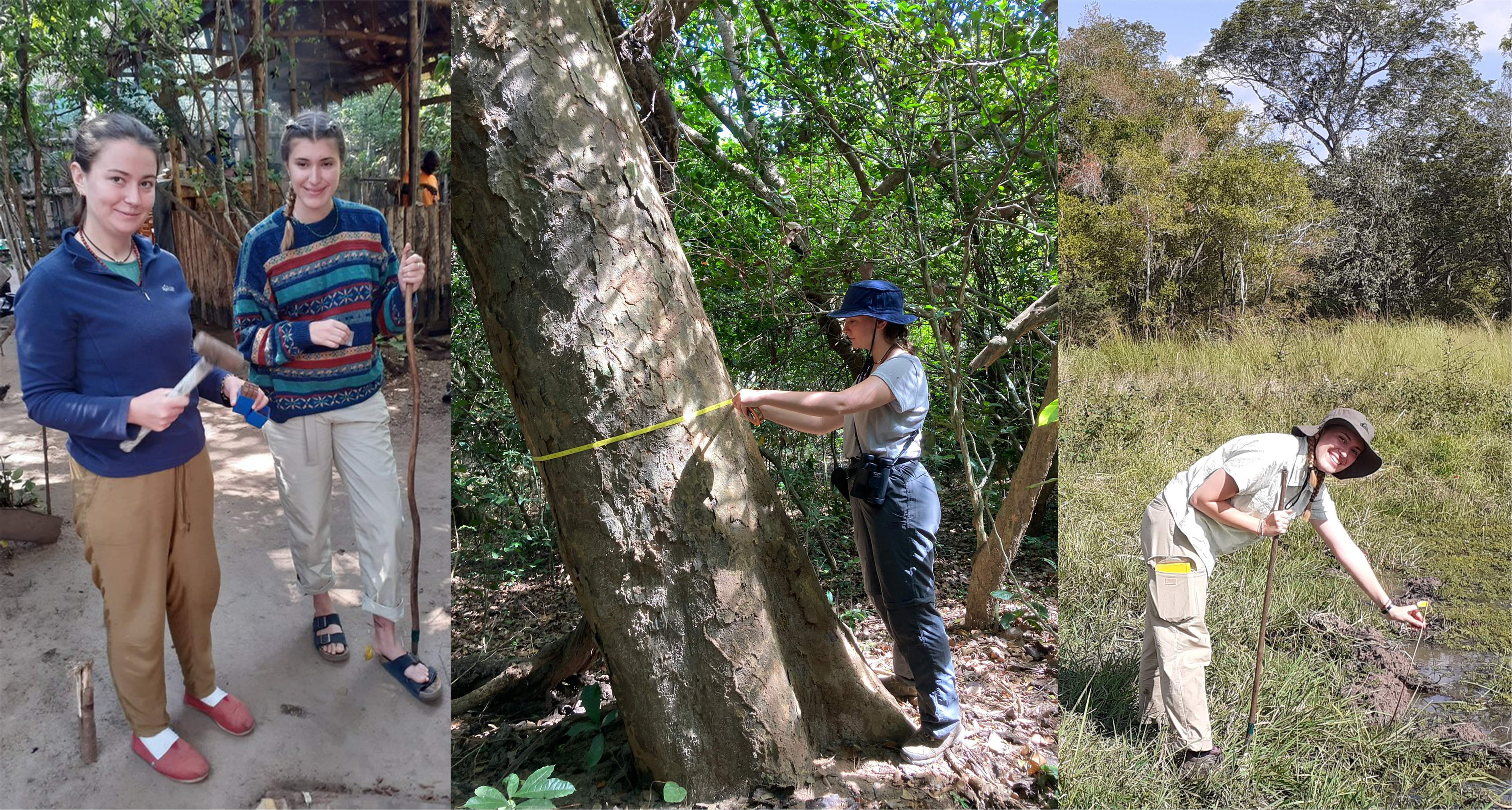
And here’s what contributions to sustainable business models may look like for these vital fringe conservation areas: young and adventurous visitors, like UCC undergraduates Alice Twiss and Cassandra Le Belicard, with modest budgets but enough time over the summer to learn about the intricacies of tropical ecology and the practical challenges of conservation in rural Africa .
Being an adventure of course, there are always surprizes: On her first evening of camping in the wilderness, the team of ILUMA Village Game Scouts looking after Alice had to make enough noise to deter an approaching herd of elephants.
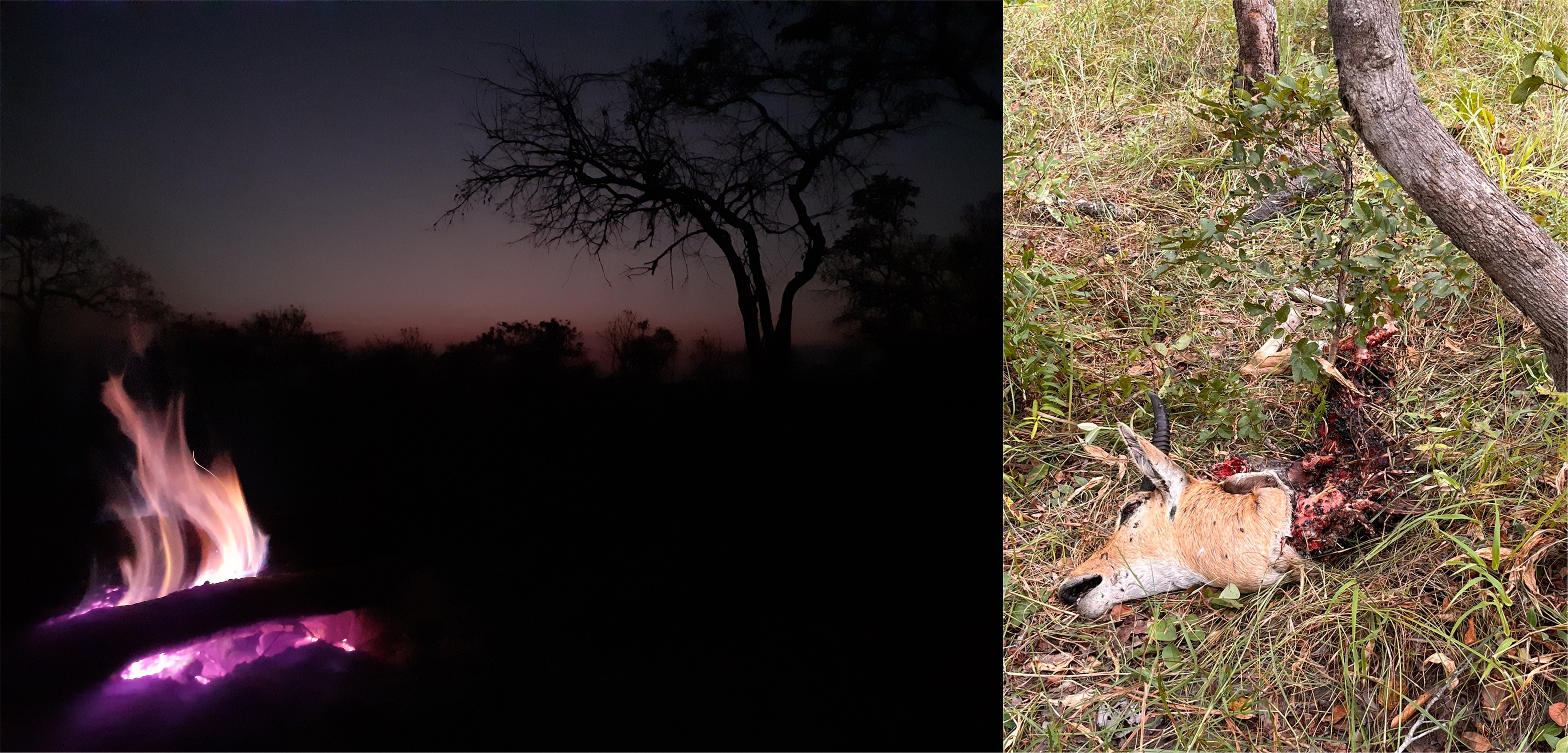
Also fascinating to huddle around the safety of a big fire and listen in on the spectacular territorial vocalizations of the local lion pride, who were kind enough on this occasion to leave something for the pot after making a kill nearby.
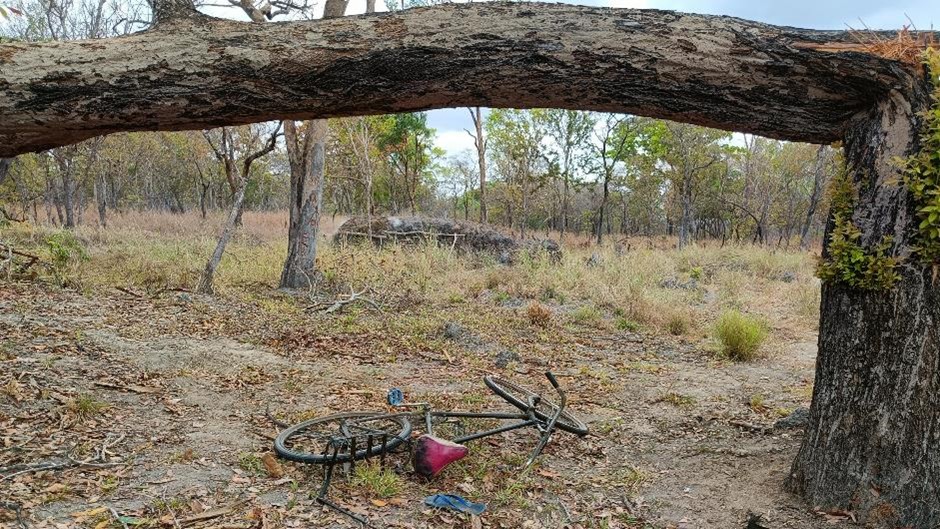
In addition to providing invaluable revenue for the ILUMA Wildlife Management Area and jobs for Village Game Scouts, simply having legal income-generating activities ongoing in the conservation area performs a conservation function because various forms of illegal encroachment (charcoal burning, timber harvesting, meat poaching, cattle herding and farming) are most readily carried out of sight and out of mind. This photo captures a common occurrence in which a bicycle has been rapidly abandoned inside the conservation area by an unknow person who was clearly startled when he/she heard the research team and their Village Game Scout escorts coming.
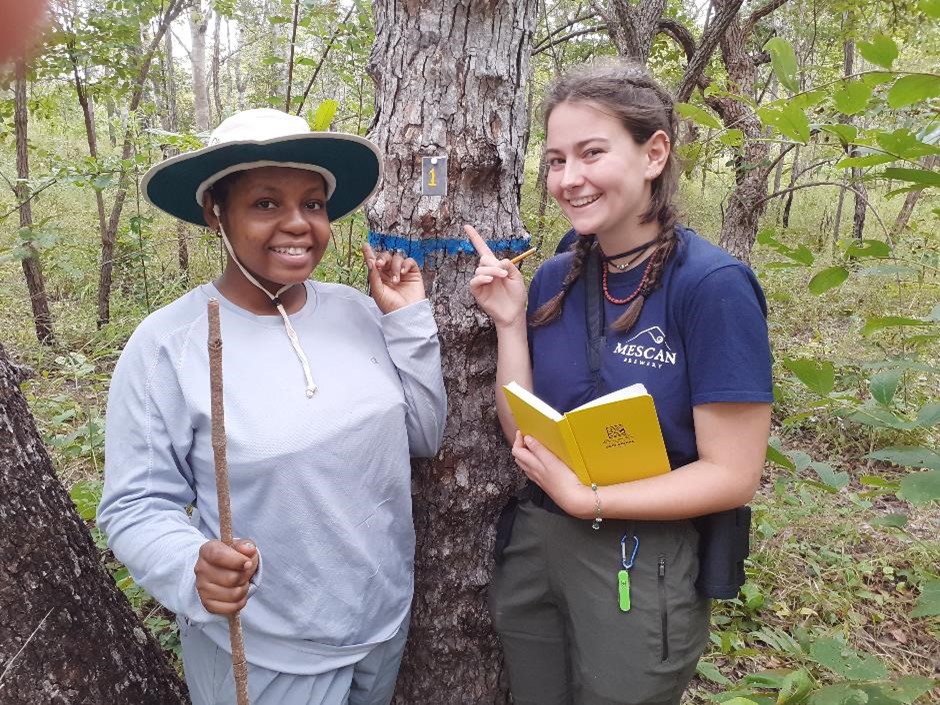
We are therefore monitoring long terms trends in wildlife abundance and habitat integrity, including forest cover. Here Lucia Tarimo, Research Assistant at Sokoine University of Agriculture and MSc candidate at the UCC School of Biological, Earth & Environmental Sciences, and UCC BSc candidate Alice Twiss, appear happy to have preliminarily marked, tagged and measured their first tree in their first plot in our first forest survey in the ILUMA Wildlife Management Area.

This is where global solidarity starts: Four Tanzanian students from Sokoine University of Agriculture and four Irish students from UCC meet each other for the first time and enjoy a good social evening getting to know each other before…

…before heading off together to enjoy their summer internship working together in the ILUMA Wildlife Management Area...
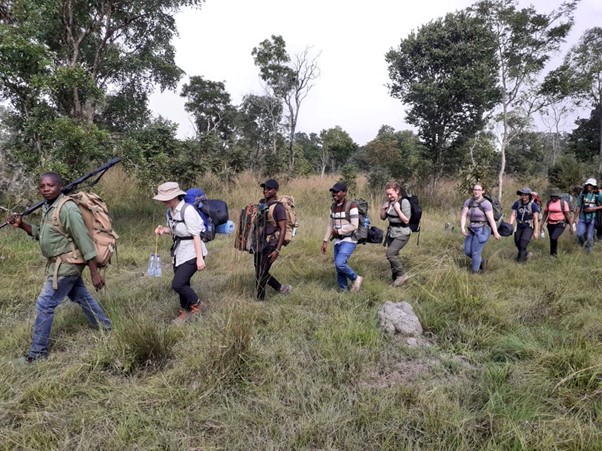
…to start their first 3-day hike, covering 50km of the wonderful miombo woodlands of ILUMA WMA, over the course of which they all learned how to live out of a backpack in the wild for the first time.
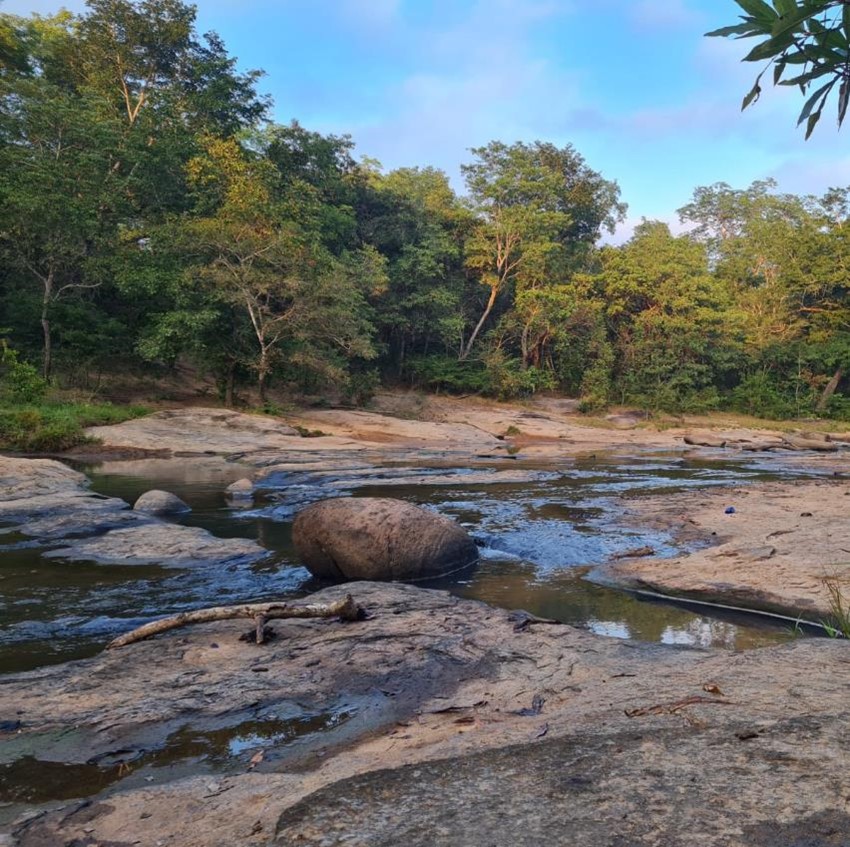
This initial hike across the ILUMA Wildlife Management Area by the SUA-UCC intern team took them to the beautiful Daraja La Mungu, meaning God’s Bridge.
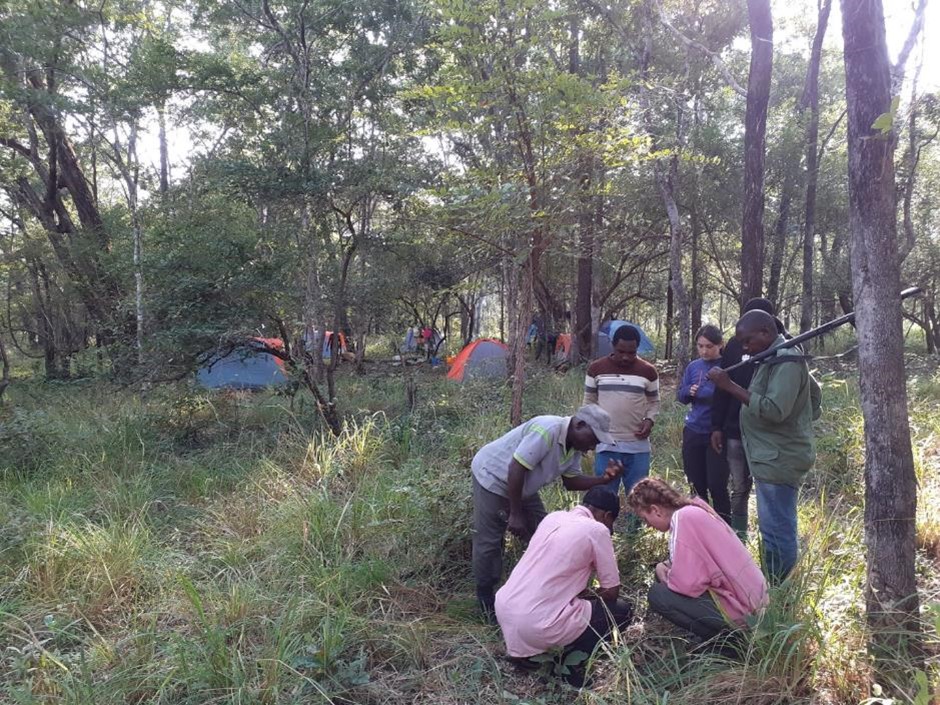
Nice for our twinned Irish-Tanzanian interns to not only learn how to collect mosquitoes while living out of a backpack, but also read the tracks of the visitors that pass through our temporary camps at night in ILUMA Wildlife Management Area.
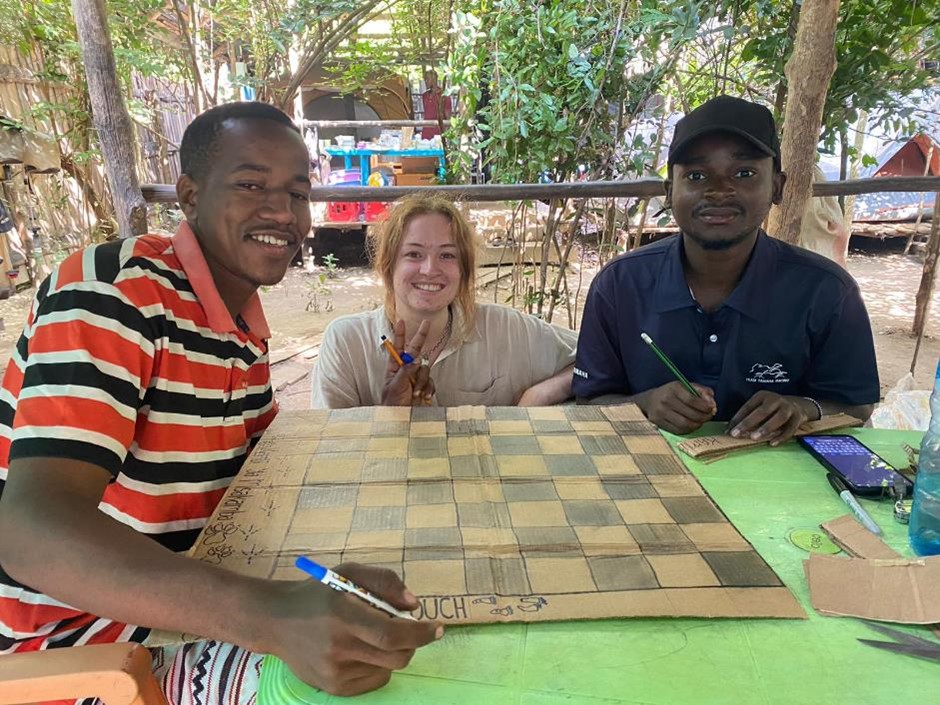
Not all work though, and one of the most important aspects of this shared internship experience was to get to know each other by simply having fun! Here playing drafts back in the relative comfort of our central camp at Msakamba.
And the Village Game Scouts who look after us so well in ILUMA WMA also work very hard on protecting these beautiful forests and the wild animals that call it home. Take a look at how much work it takes to confiscate a dugout canoe made from an illegally harvested log.
>
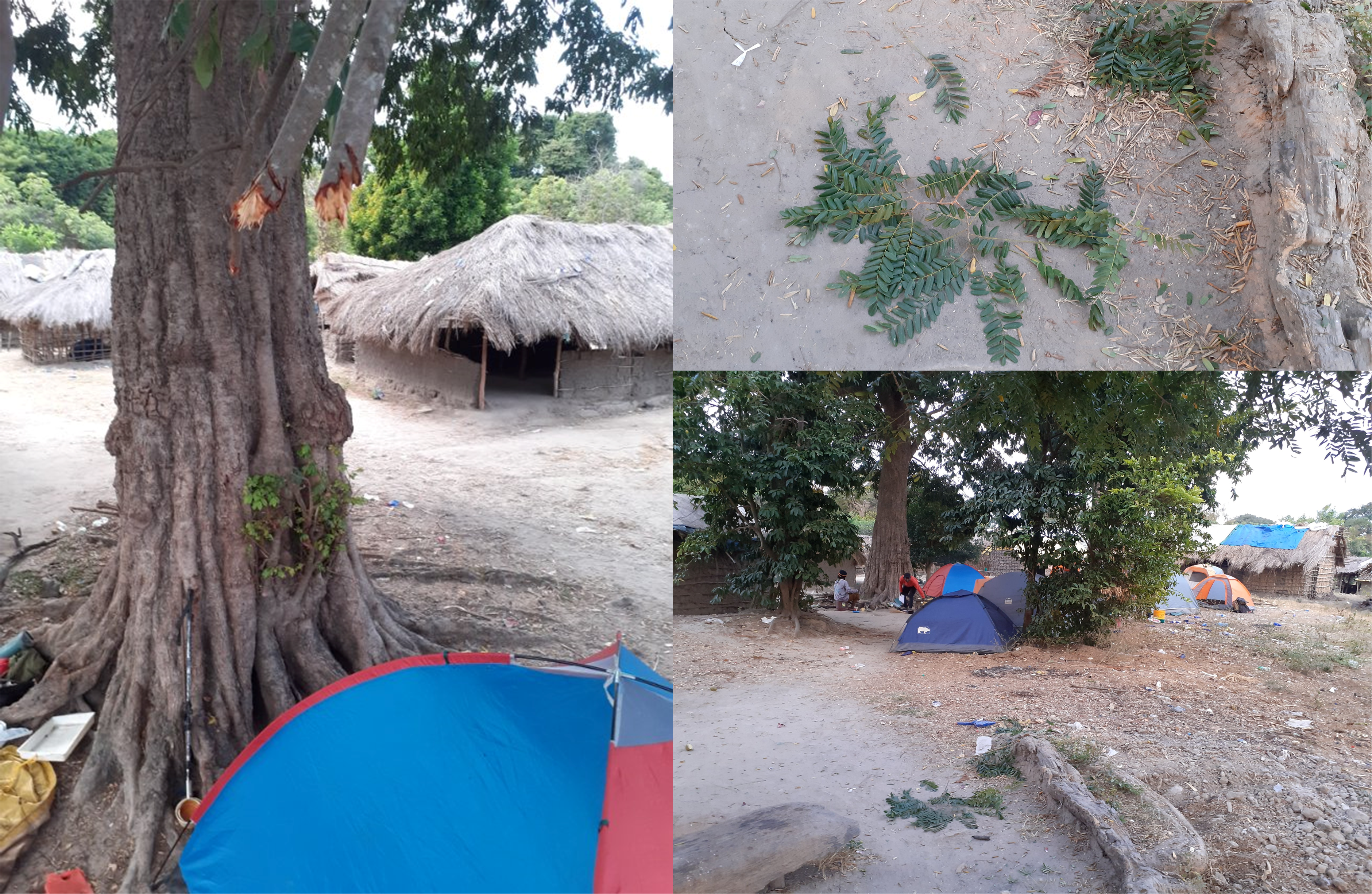
And here is why one always needs expert Village Game Scouts looking after you in the wilds of ILUMA Wildlife Management Area: One night the elephants browsed on the trees directly above our tents while walking right through the beautiful fishing village of Mikeregembe on the south bank of the Kilombero River, leaving plenty of evidence of their passing.

Despite the odd scare at night, and nuisance they sometimes cause in nearby villages, it’s great to see the elephants back in numbers again at the ILUMA Wildlife Management Area. Seen here intern group while making their way through the papyrus swamp of the floodplain to the north of the Kilombero River, with the rainforest-covered Udungwa Mountains in the background. Photographed safely from the groundwater forest on the south bank by the SUA-UCC student intern group in July 2023.

Again, some really impassioned views expressed by community members at the 2023 stakeholders meeting of the ILUMA Wildlife Management Area.
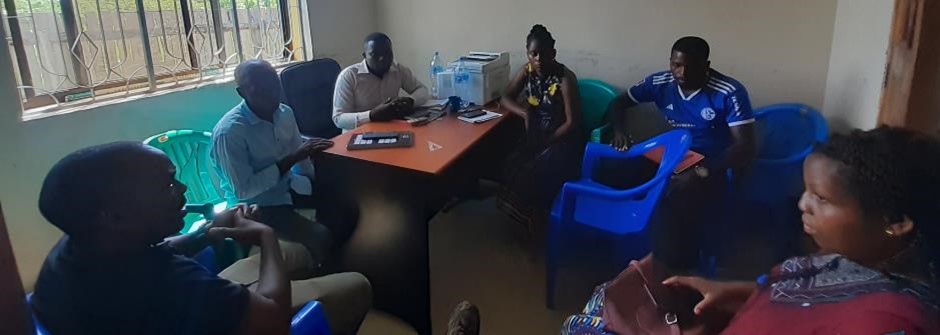
Always enjoyable discussing progress and plans with the management committee of the ILUMA Wildlife Management Area, a real grass roots organisation for community-based conservation and rural development.
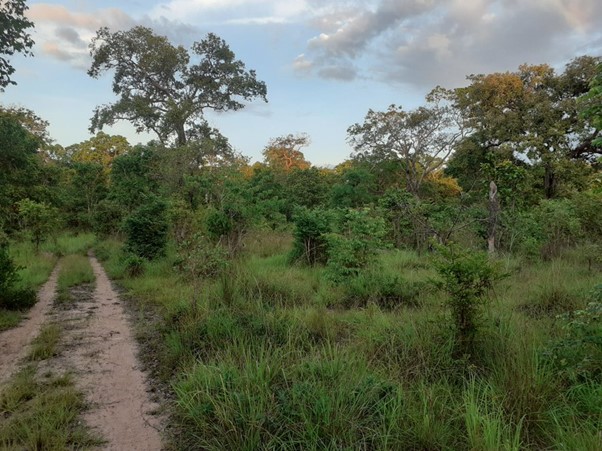
Something we have particularly enjoyed over the last 3 years of working with the ILUMA Wildlife Management Area is seeing our camp at Msakamba disappear into the landscape as the forest regrows around it. It used to be clearly visible from this corner on the road.
Our final set of mosquito surveys took us deep into some of the most gorgeous parts of Nyerere National Park, the newest and largest national park in Africa. What an amazing place to visit, with Shuguli Falls on the Ulanga River being a particular highlight.
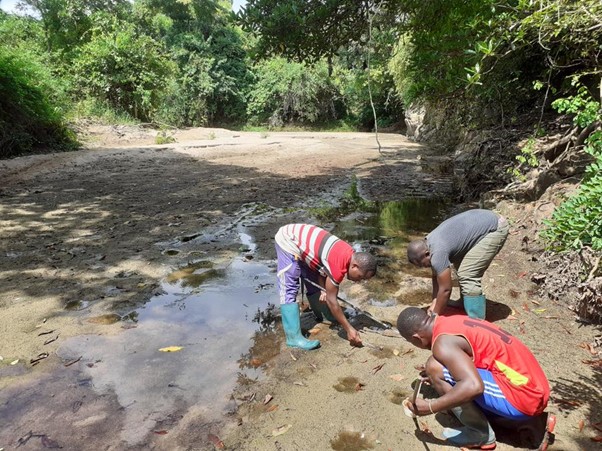
Deo Kavishe and his team collect mosquito from hippo footprints along a seasonal streambed feeding into the famous Great Ruaha River, deep inside in Nyerere National Park.

As described in our article published by RTE, our national broadcaster in Ireland, this really wasn’t an easy field trip but certainly had its moments: Deo Kavishe and Ger Killeen enjoying the shady office space provided by a densely forested stream bed along the banks of the Great Ruaha River deep inside Nyerere National Park.

Sarah Ní Ceallaigh (UCC undergraduate summer intern, to the left) and Lucia Tarimo (Research Fellow at Sokoine University of Agriculture and MSc candidate at UCC, to the right) make good use of one of the 6 bicycles suddenly abandoned by poachers when our survey team stumbled upon them in the summer of 2024.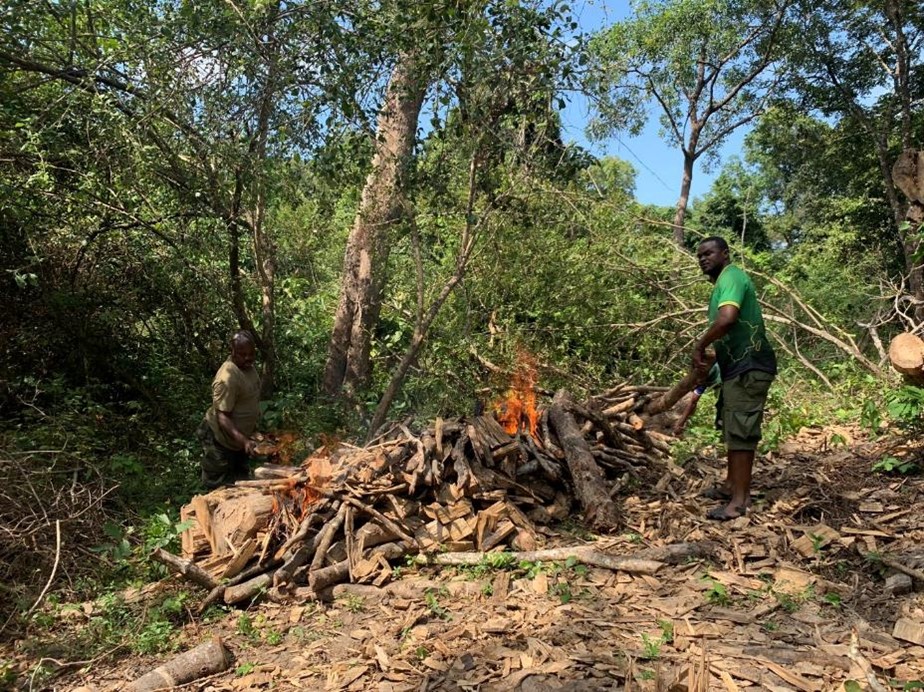
Village game scouts from the ILUMA WMA destroy a confiscated dugout canoe made from an illegally felled tree during the latest round of surveys of human, livestock and wildlife activity across the ILUMA Wildlife Management Area in the summer of 2024. The village game scouts initially identified the drag marks along their path as those of a dugout canoe or mtumbwi and followed those tracks to confiscate it.

Our first graduates from the project, Lily Duggan (Centre left) and Katrina Walsh (Centre right), who were conferred with their Masters’ Degrees from UCC in June 2024, flanked by their colleague Deo Kavishe of IFAKARA HEALTH INSTITUTE (Far left), who was their day-to-day field supervisor during their time in Tanzania and Prof Ger Killeen, their primary academic supervisor (Far right).
To survey 700 km2 on foot, they had to fly camp and live out of their backpacks for 158 days in the wilderness. As detailed in her three publications and preprints, Lily developed new techniques for quantifying activities of people, livestock and wild animals around water bodies, developed an observational method for subjective ecosystem integrity assessment, and then applied those novel methods to inform strategy for the ongoing development of the ILUMA Wildlife Management Area as a community-based conservation and rural development organization. As described in here lengthy publication preprint Katrina surveyed mosquito larvae in these same water bodies, to successfully identify what mammals they feed on as adults, map out their roles in transmission of vector-borne diseases and inform malaria vector control strategy. As Deo continues his PhD at UCC, jointly supervised by IFAKARA HEALTH INSTITUTE, he has published preprints on new methods for transporting live mosquitoes on foot across vast tracts of difficult wild terrain, as well as a field-based comparison of two closely related species of mosquitoes in terms of their relative attraction to humans.

The ILUMA Wildlife Management Area management committee discussing conservation enforcement operational plans in the field with the District Game Officers of Kilombero and Ulanga, as well as sundry other partners from the Ifakara Health Institute, Sokoine University of Agriculture and the African Wildlife Foundation. This particular conversation, during an extensive field inspection spanning the entire protected area in September 2024, took place in the dense groundwater forests near Mikeregembe, where the concrete beacon on the ground marks the boundary with Nyerere National Park.
Project Publications
Killeen, G.F. & T.E. Reed (2018) The portfolio effect cushions mosquito populations and malaria transmission against vector control interventions. Malaria Journal. 17: 291. https://malariajournal.biomedcentral.com/articles/10.1186/s12936-018-2441-z
Smeller, D.S., Courchamp, F. & G.F. Killeen (2020) Biodiversity loss, emerging pathogens and human health risks. Biodiversity and Conservation. 29: 3095-3102.https://link.springer.com/article/10.1007/s10531-020-02021-6
Duggan, L.M., Tarimo, L.J., Walsh, K.A., Kavishe, D.R., Crego, R.D., Manase, E., Mombo, F. & G.F. Killeen (2024) Direct comparative assessment of radial and transect surveys to document wild mammal activity across diverse habitat types. African Journal of Ecology. 62: e13309. https://onlinelibrary.wiley.com/doi/10.1111/aje.13309
Kavishe, D.R., Msoffe, R.V., Malika, G.Z., Walsh, K.A., Duggan, L.M., Tarimo, L.J., Butler, F., Kaindoa, E.W., Ngowo, H.S. & G.F. Killeen (2024) A self-cooling self-humidifying mosquito carrier backpack for transporting live adult mosquitoes on foot over long distances under challenging field conditions. Medical and Veterinary Entomology. Submitted and posted as a preprint at: https://www.biorxiv.org/content/10.1101/2024.04.13.588955v1.full.
Duggan, L.M., Walsh, K.A., Tarimo, L.J., Kavishe, D.R., Crego, R., Manase, E., Butler, F., Mombo, F. & G.F. Killeen (2024) A subjective and intuitive approach to rapid, holistic assessment of natural ecosystem integrity across a community-managed conservation area in southern Tanzania. Submitted and posted as a preprint at: https://www.authorea.com/users/790374/articles/1218610-a-subjective-and-intuitive-approach-to-rapid-holistic-assessment-of-natural-ecosystem-integrity-across-a-community-managed-conservation-area-in-southern-tanzania
Kavishe, D.R., Walsh, K.A., Msoffe, R.V., Duggan, L.M., Tarimo, L.J., Butler, F., Govella, N.J., Kaindoa, E.W. & G.F. Killeen (2024) Comparative attractiveness of Anopheles quadriannulatus and Anopheles arabiensis to people estimated by comparing the relative abundance of these two species in larval samples, unbaited adult catches and human-baited adult catches. BioRXive. https://www.biorxiv.org/content/10.1101/2024.08.07.606970v1
Duggan, L.M., Tarimo, L.J., Walsh, K.A., Kavishe, D.R., Crego, R., Eichhorn, M., Manase, E., Mombo, F., Butler, F. & G.F. Killeen (2024) An effective model for community-based conservation around authorized fishing settlements inside a devolved Wildlife Management Area in southern Tanzania. BioRXive. https://www.biorxiv.org/content/10.1101/2024.07.30.605829v1.full
Walsh, K.A., Kavishe, D.R., Duggan, L.M., Tarimo, L.J., Manase, E., Govella, N.J., Kaindoa, E.W., Butler, F. & G.F. Killeen (2024) Blood host preferences and competitive inter-species dynamics within an African malaria vector species complex inferred from signs of animal activity around aquatic larval habitats. BioRχive. https://www.biorxiv.org/content/10.1101/2024.08.04.606513v1